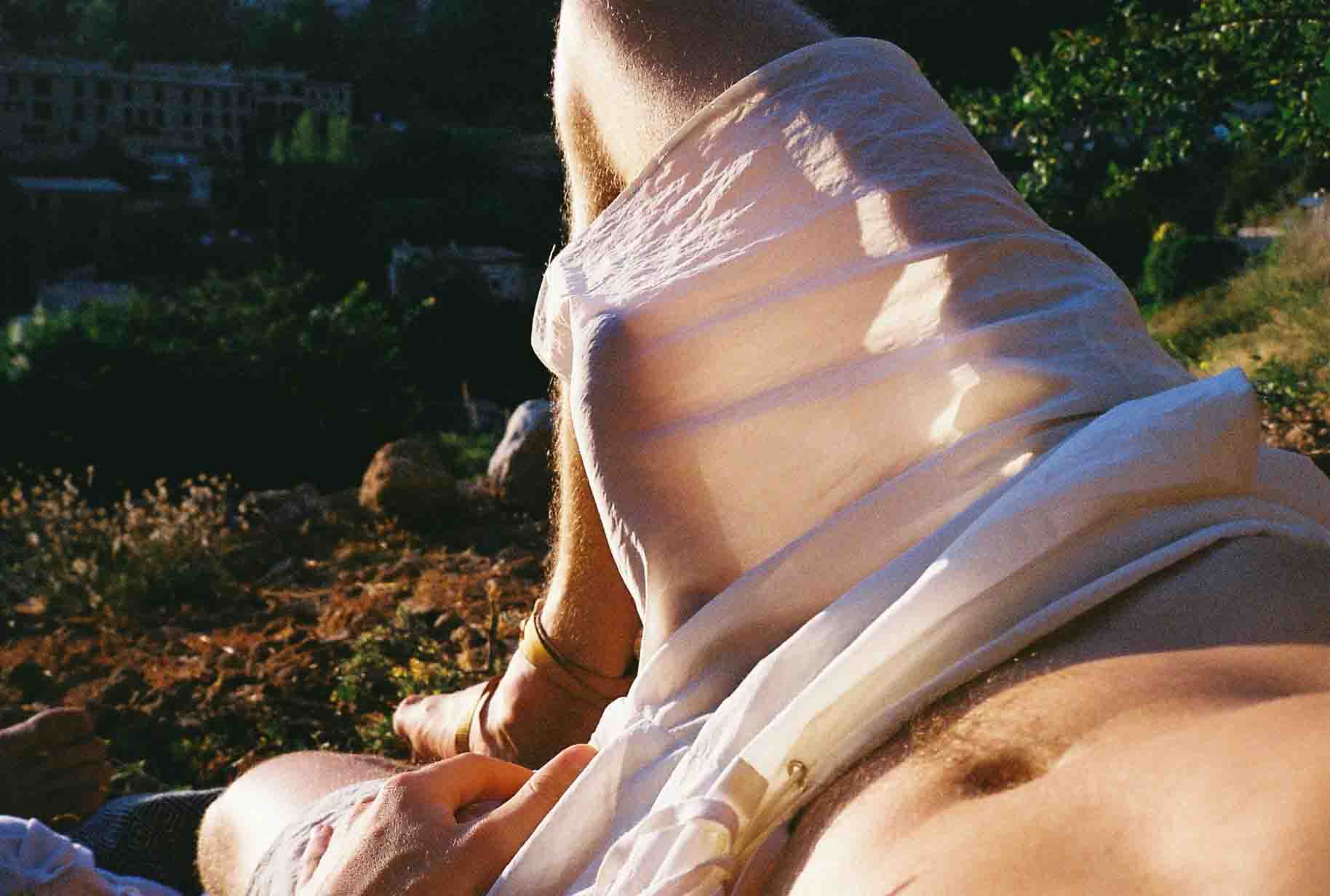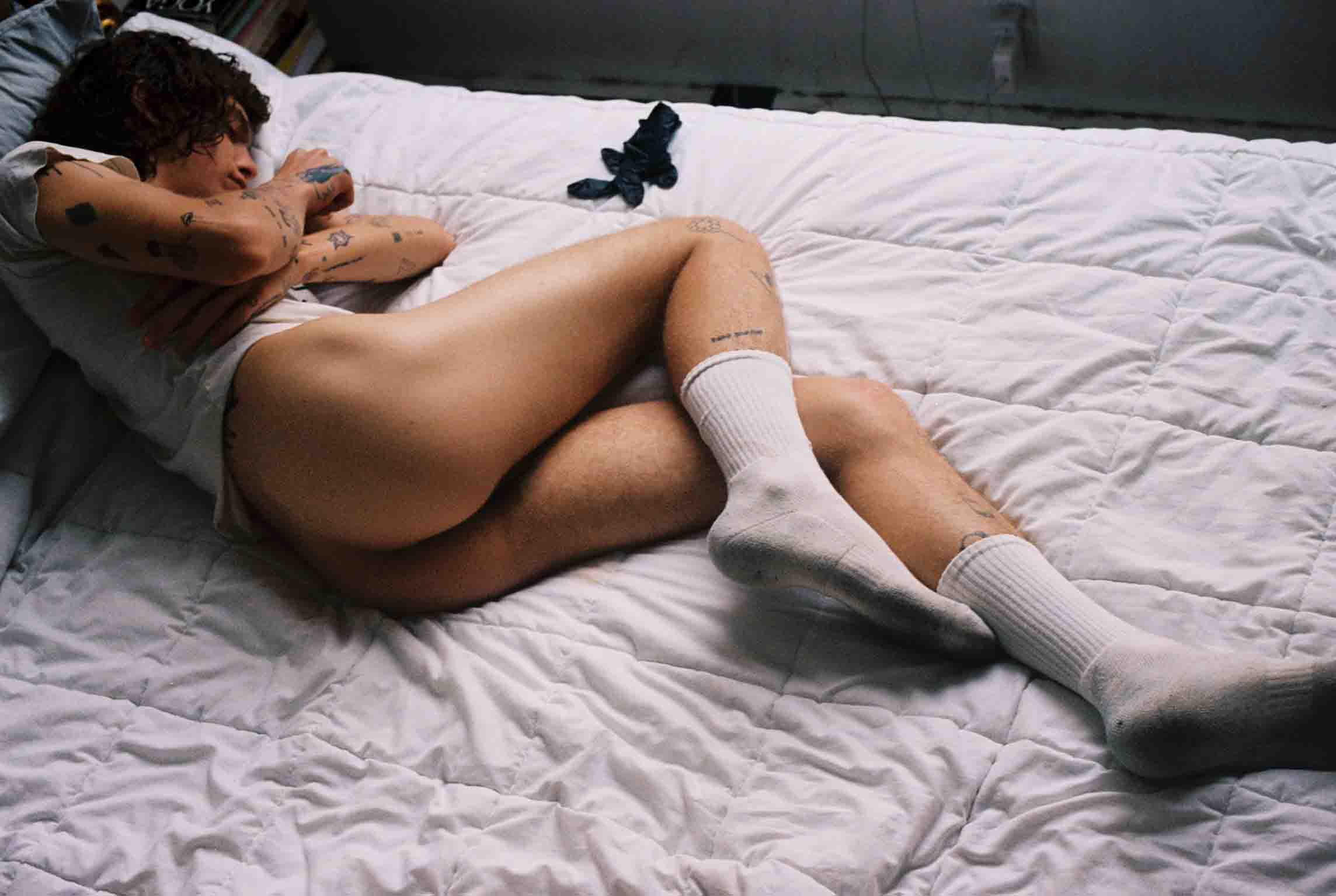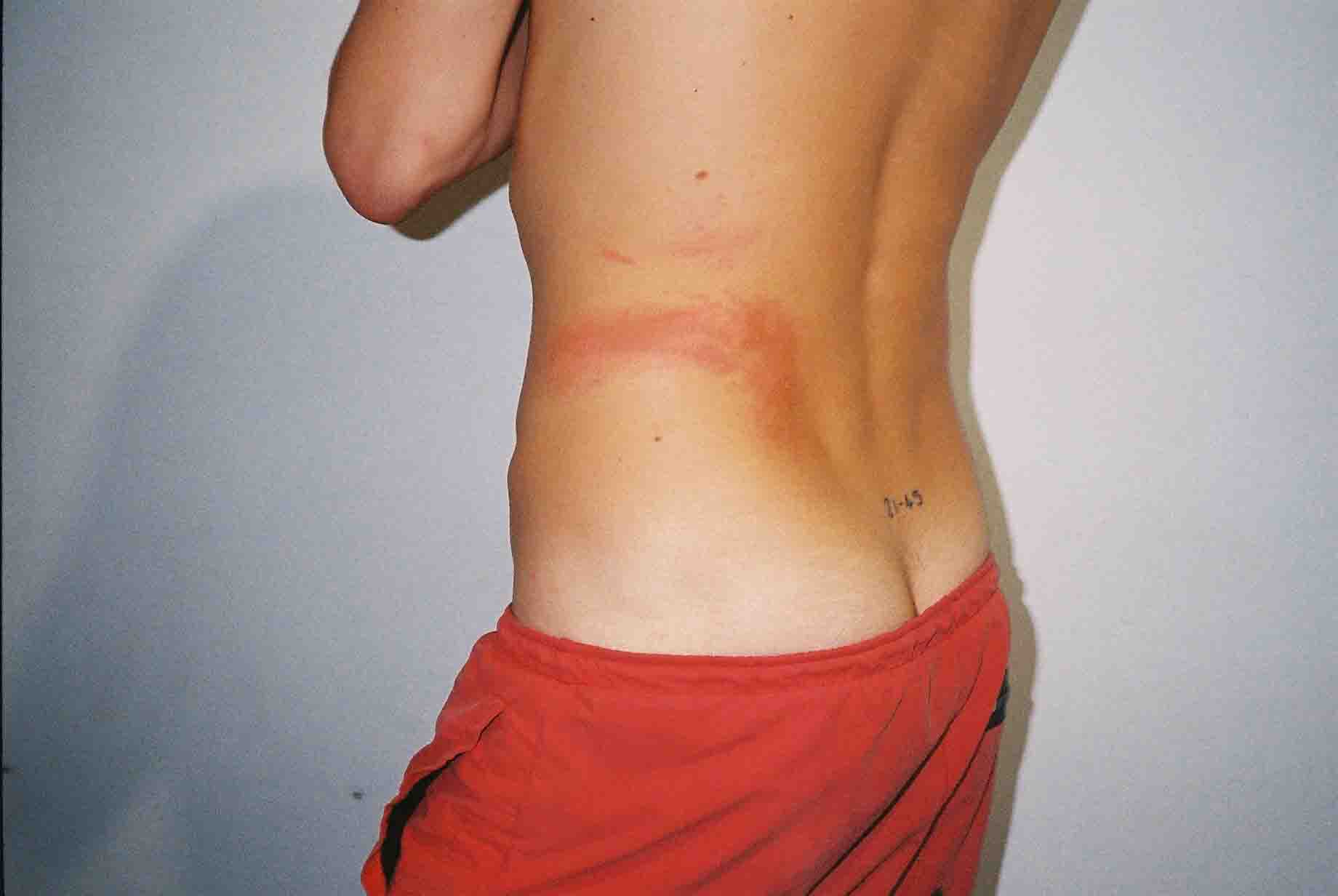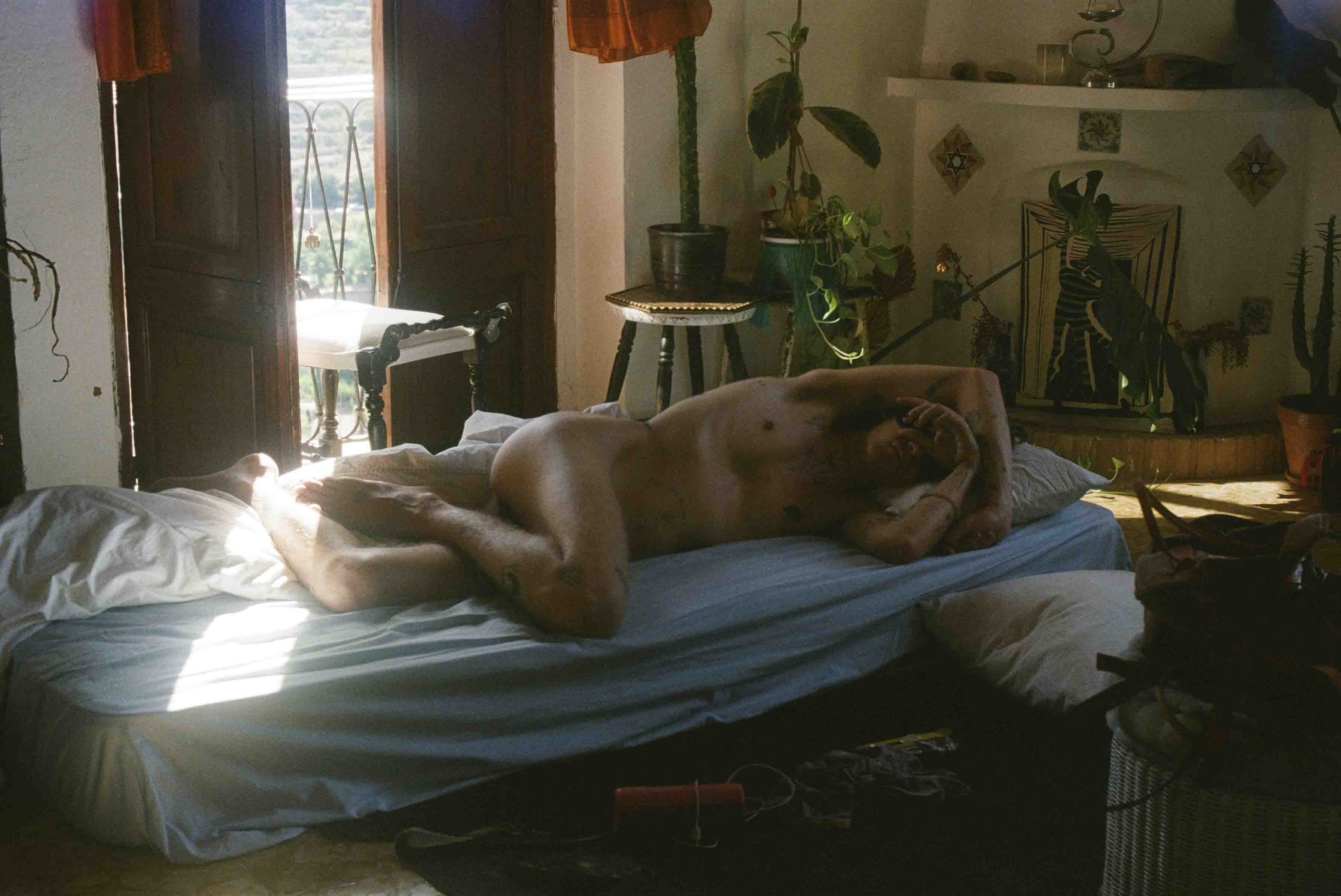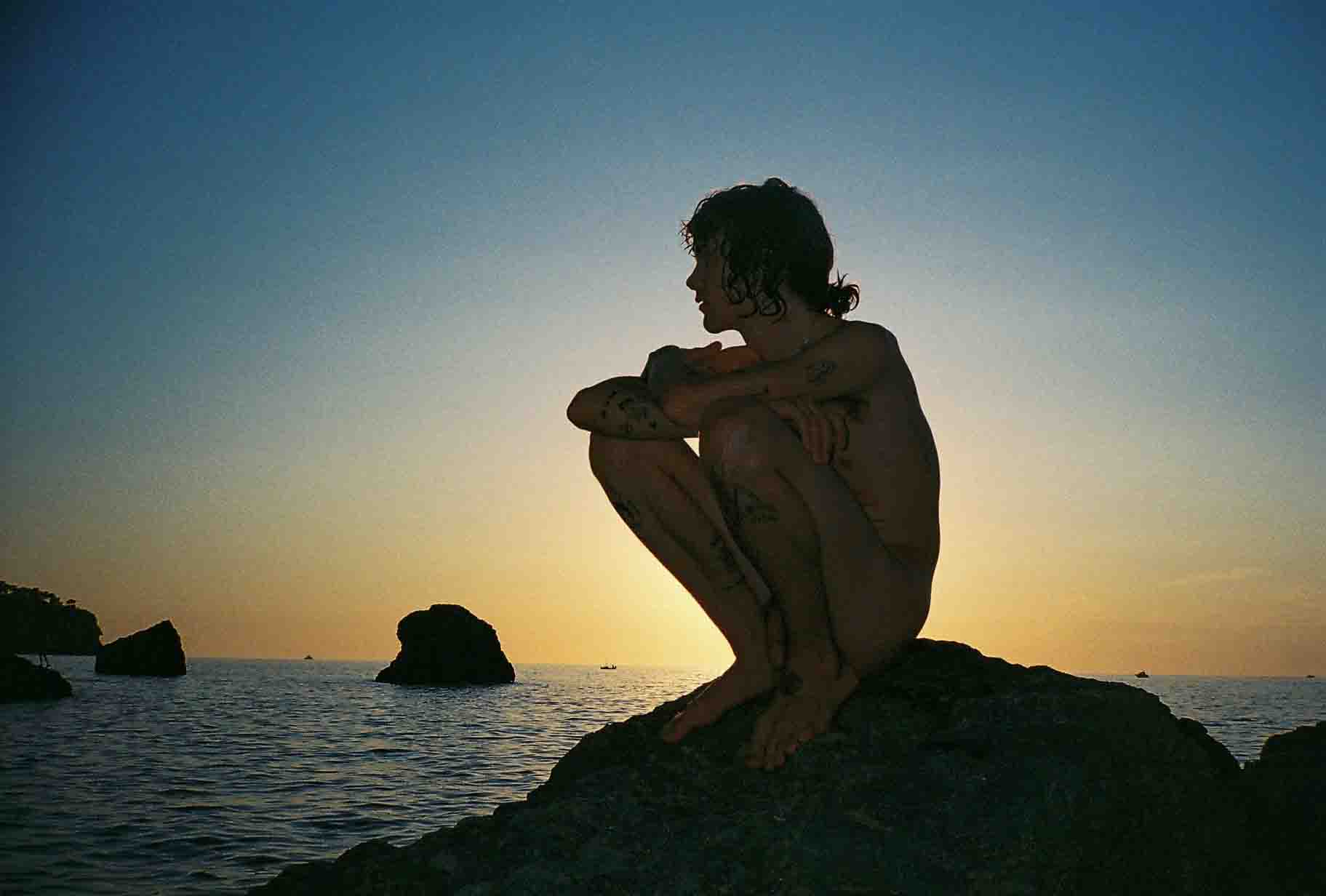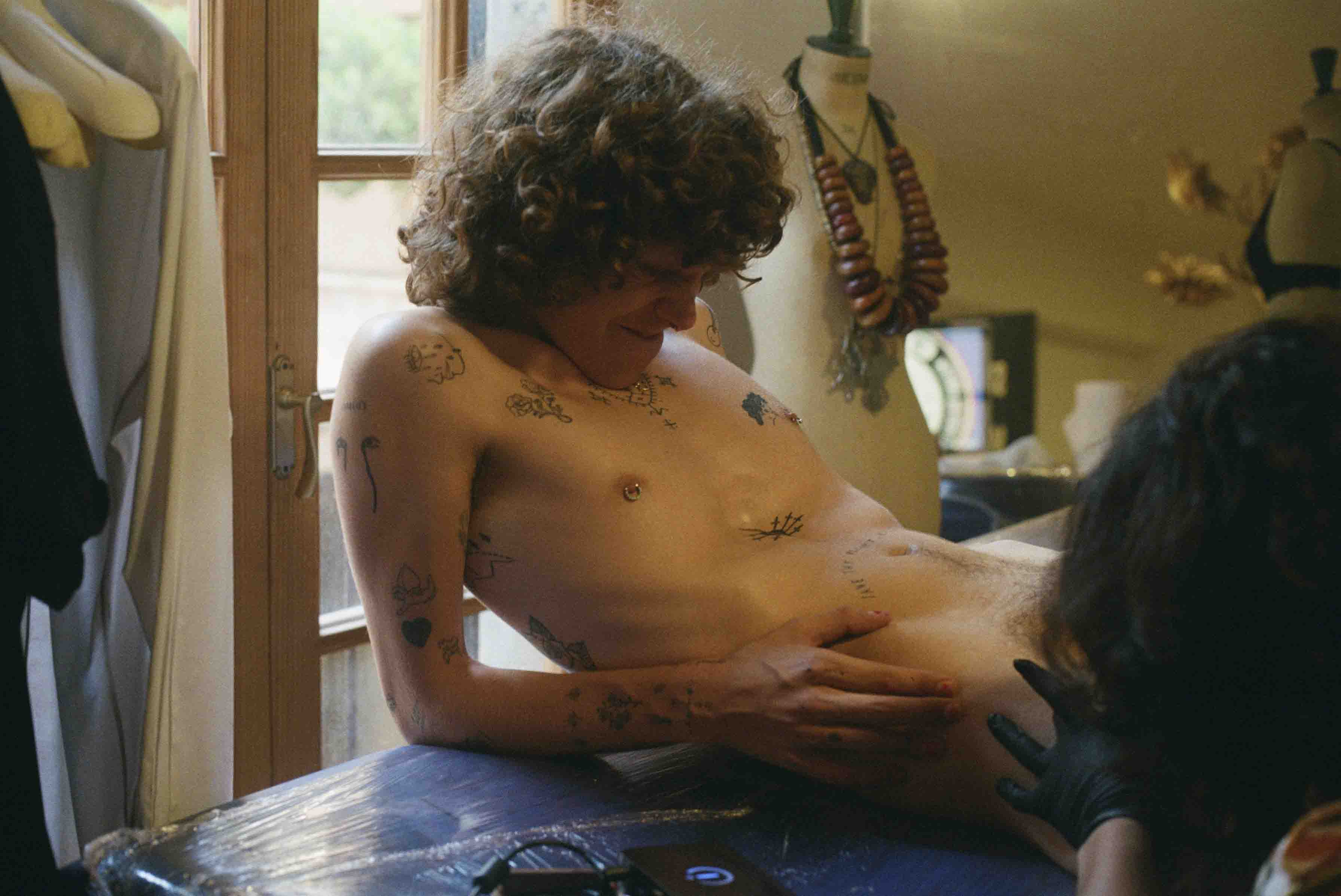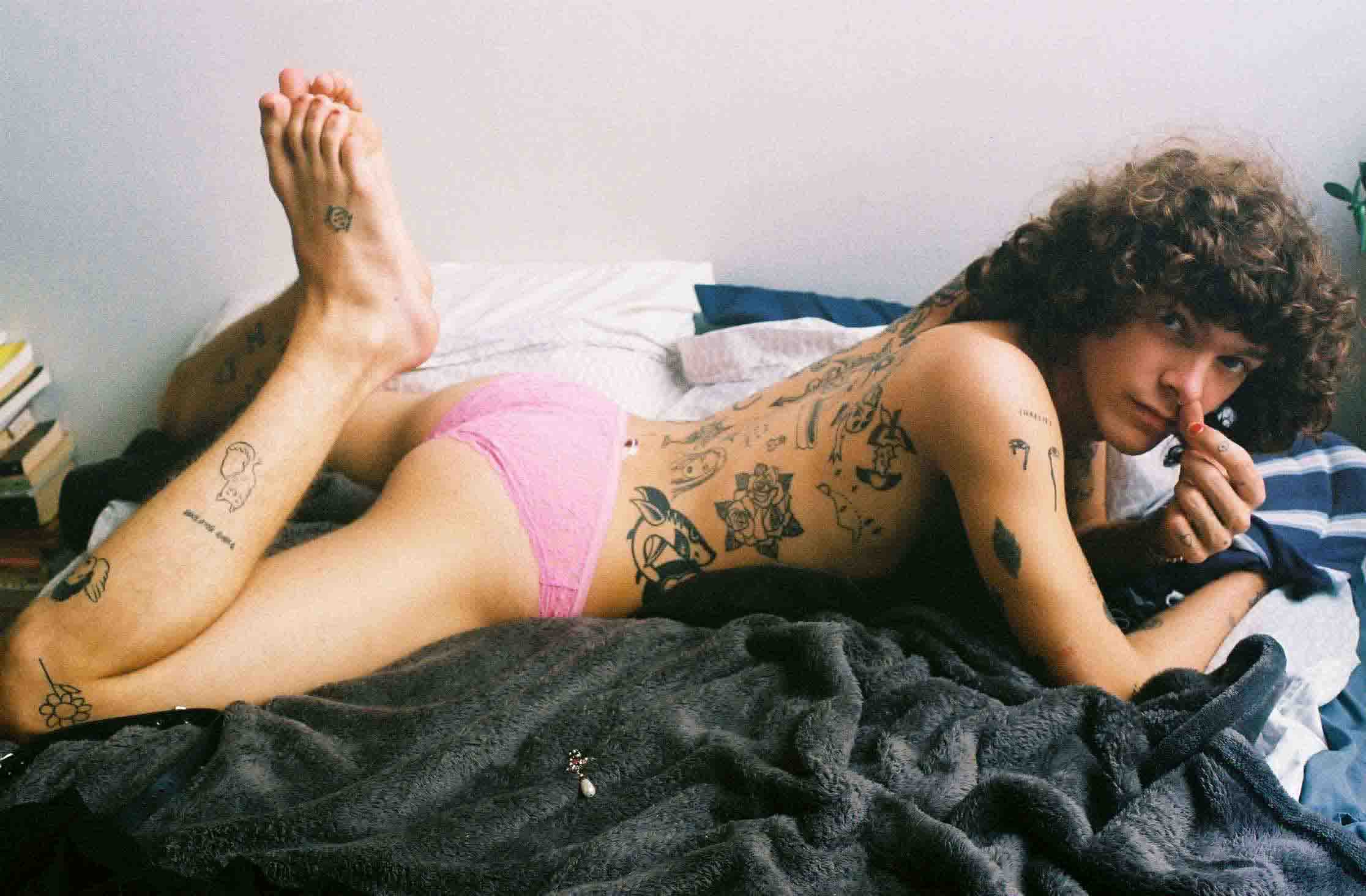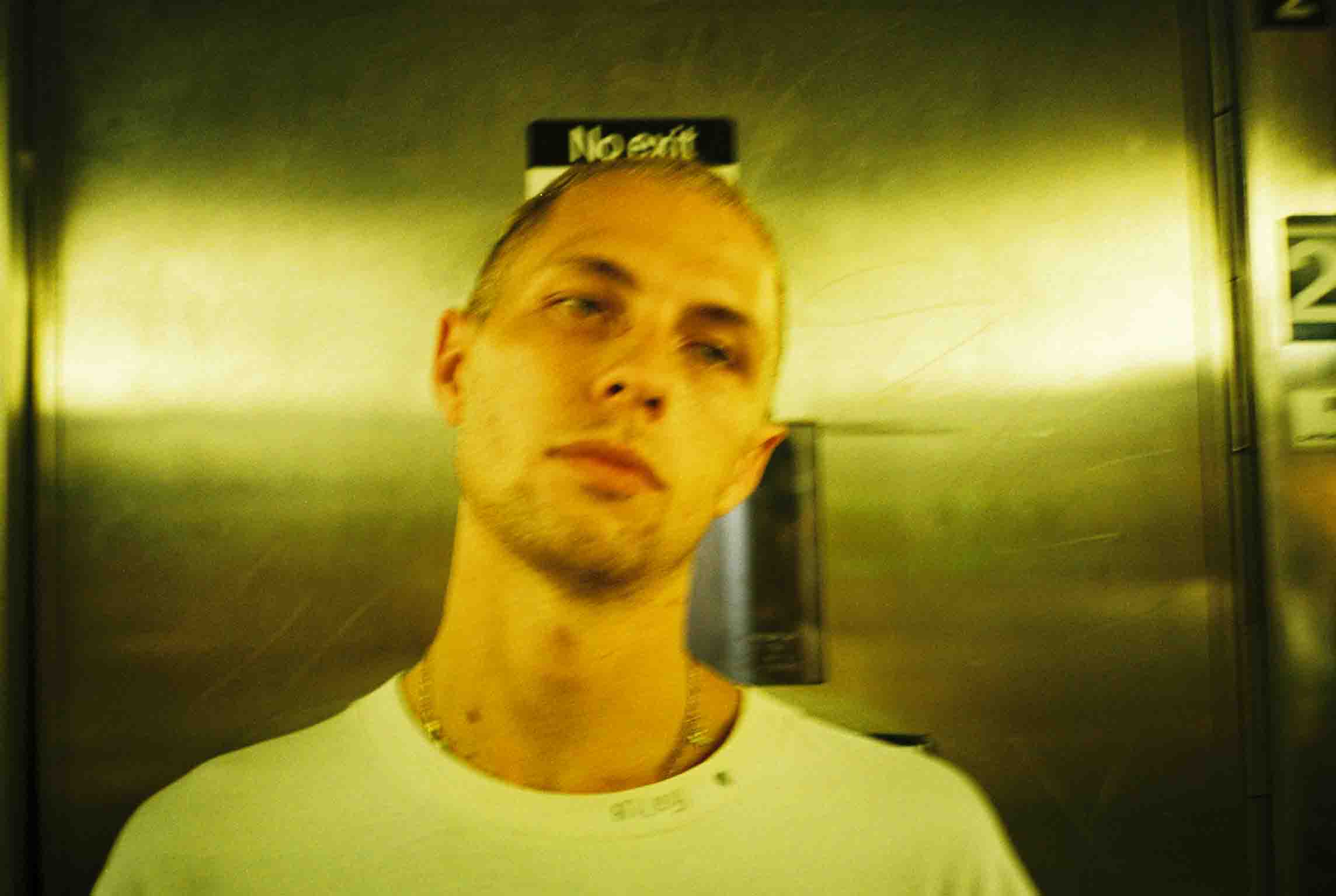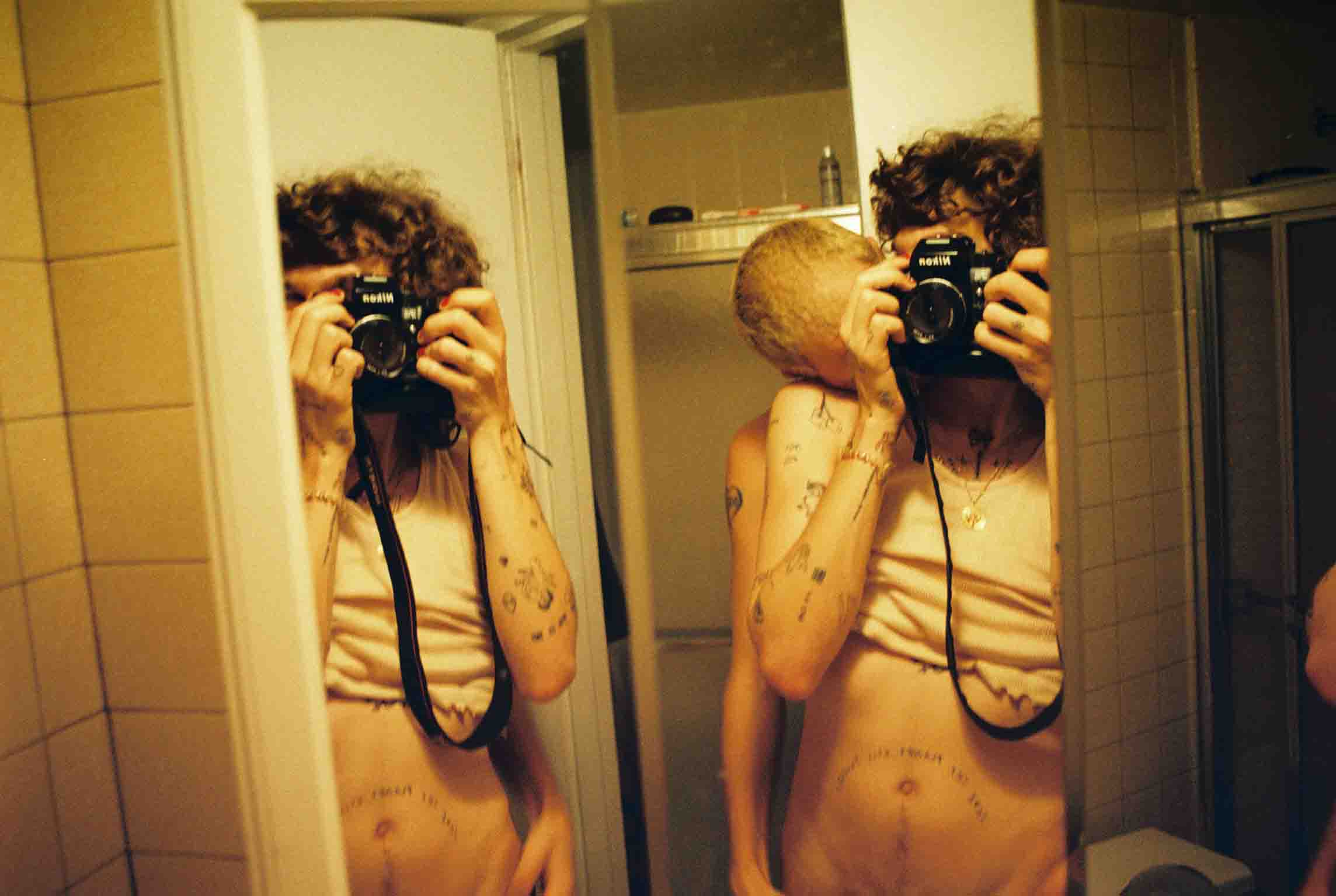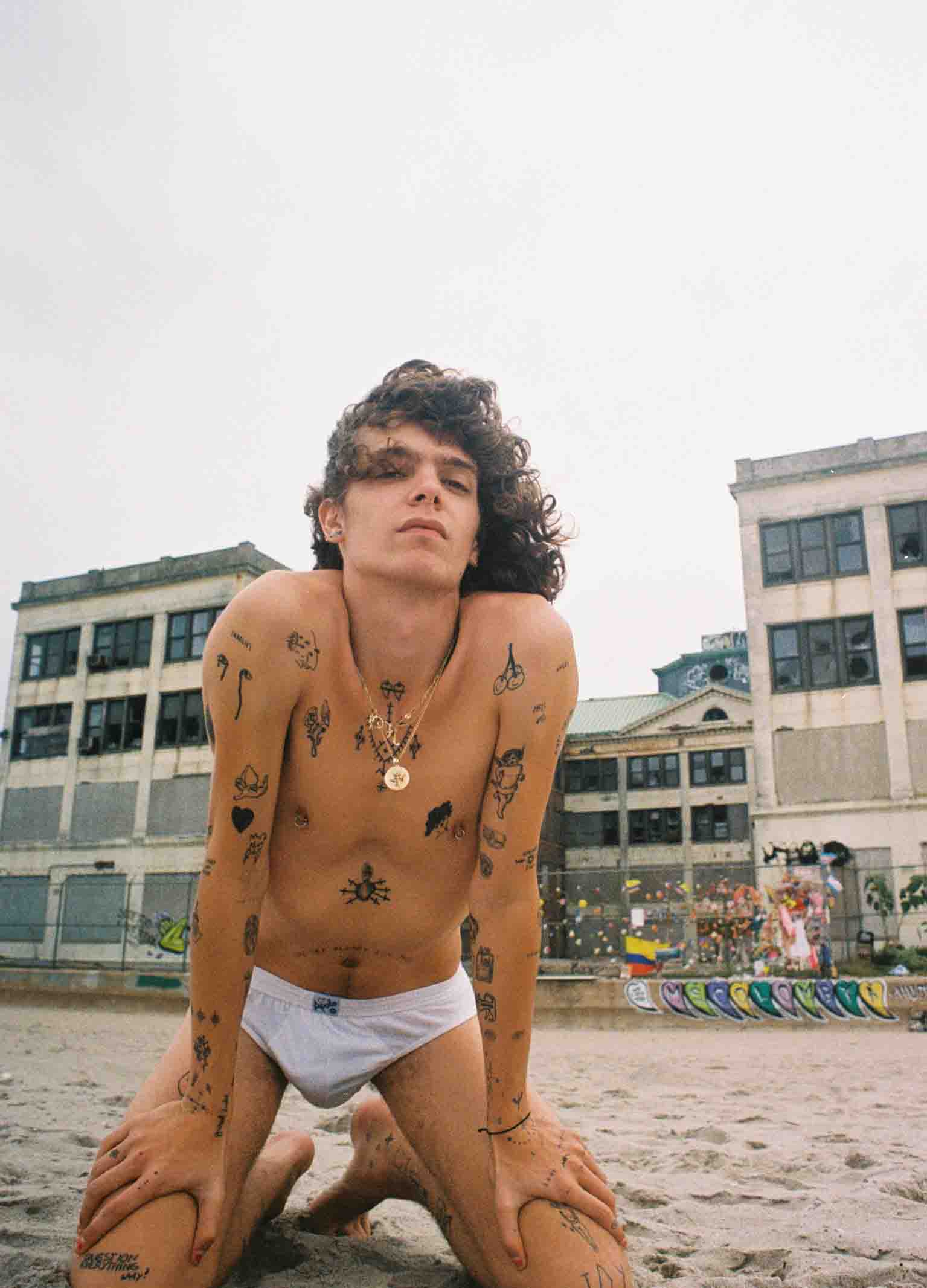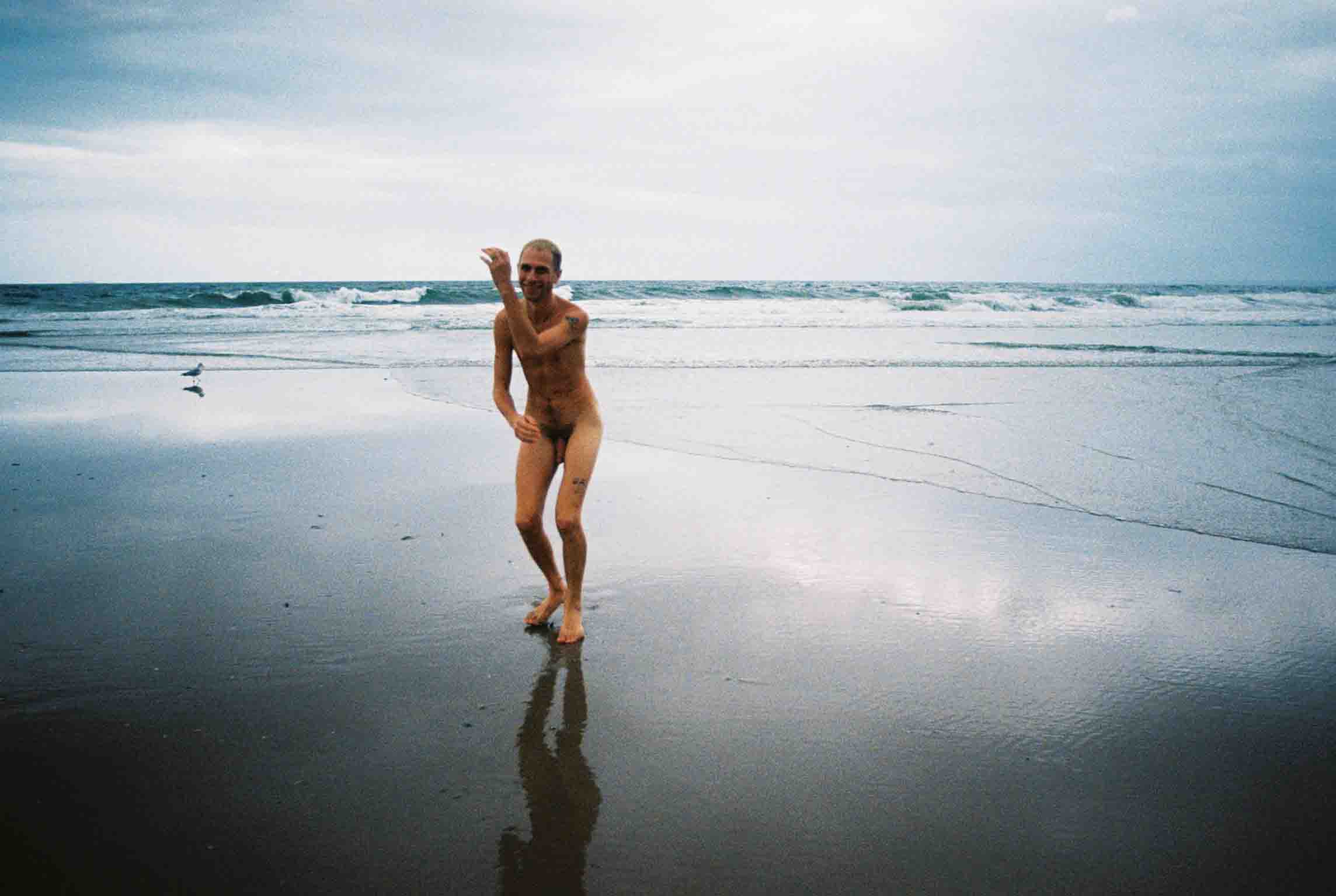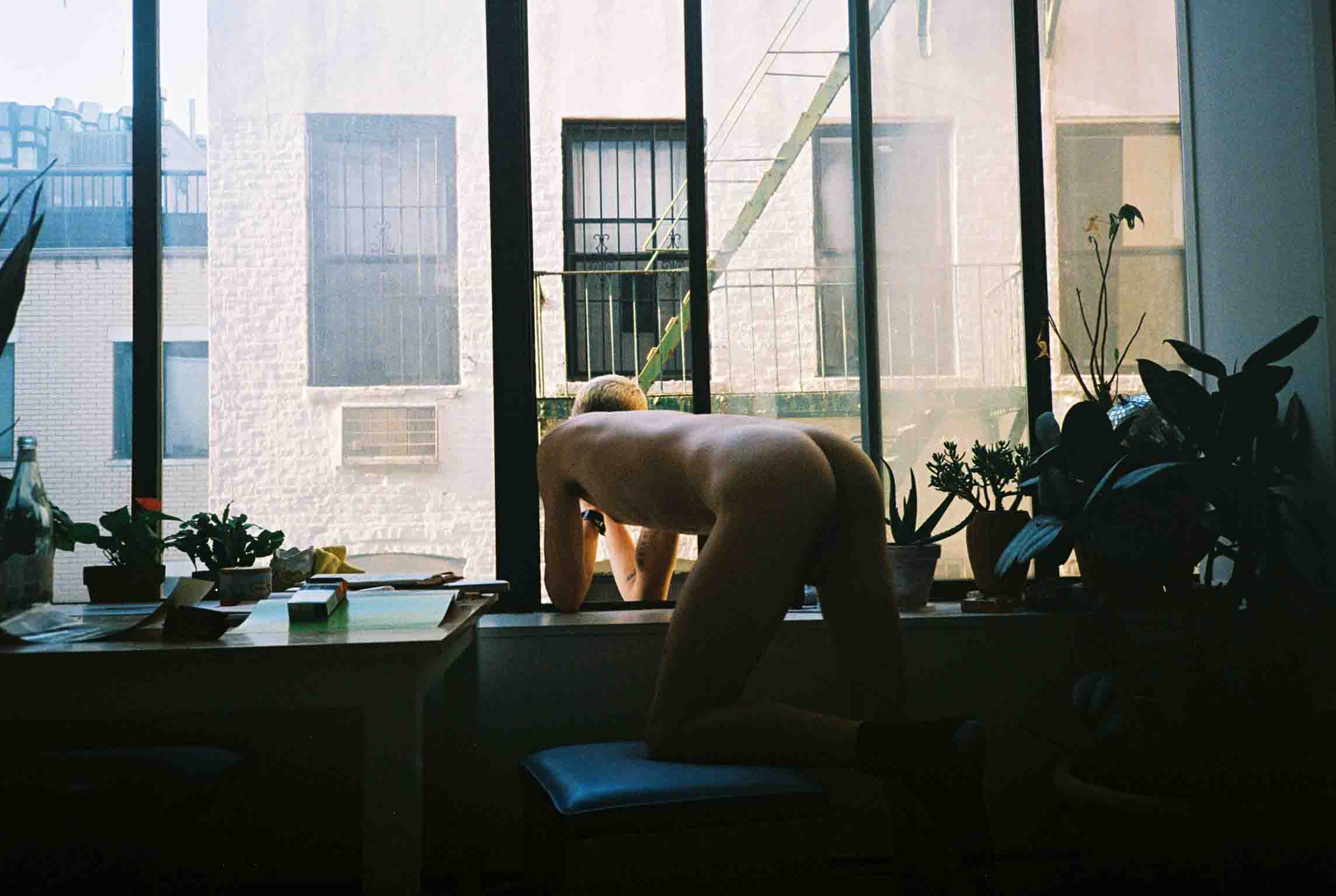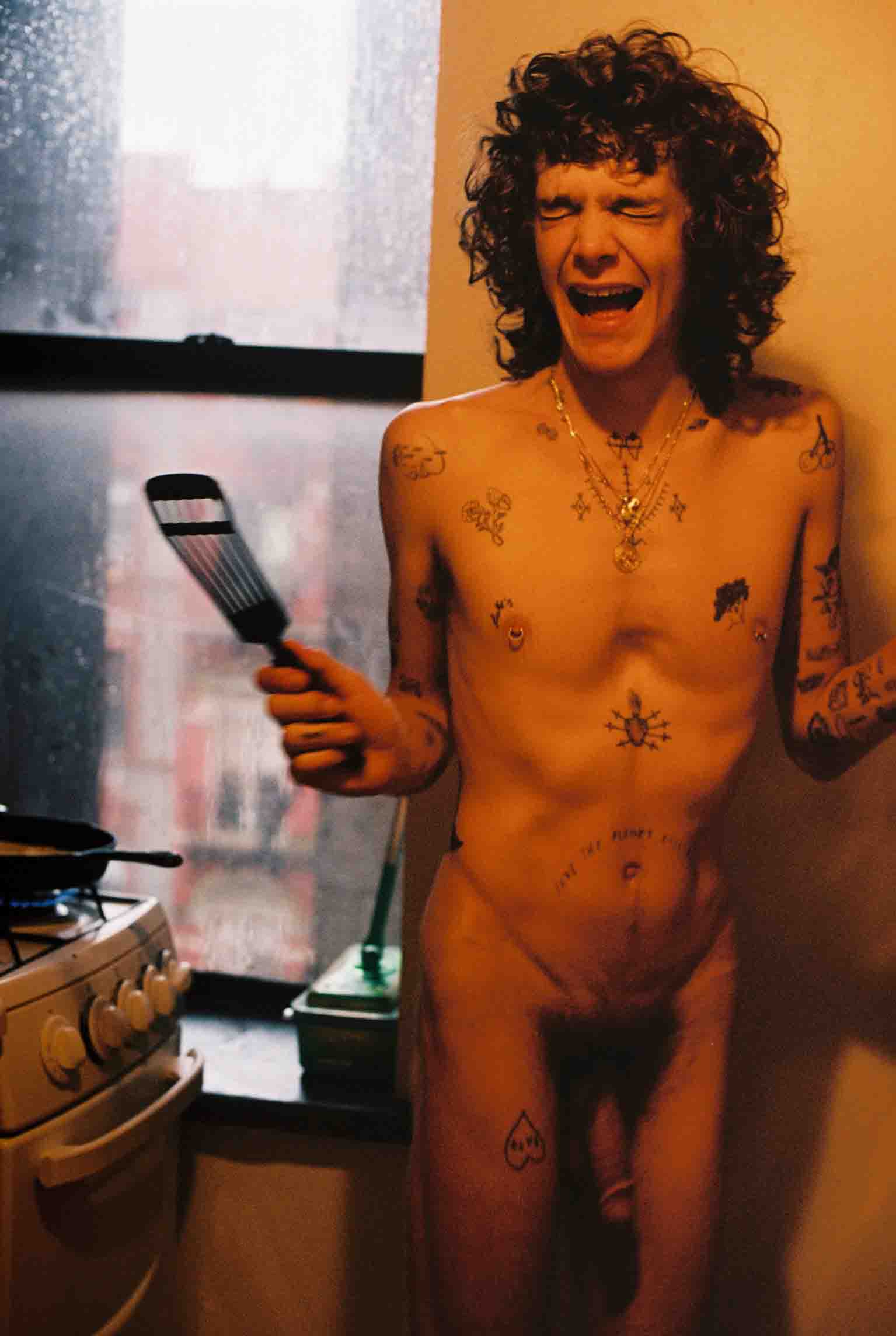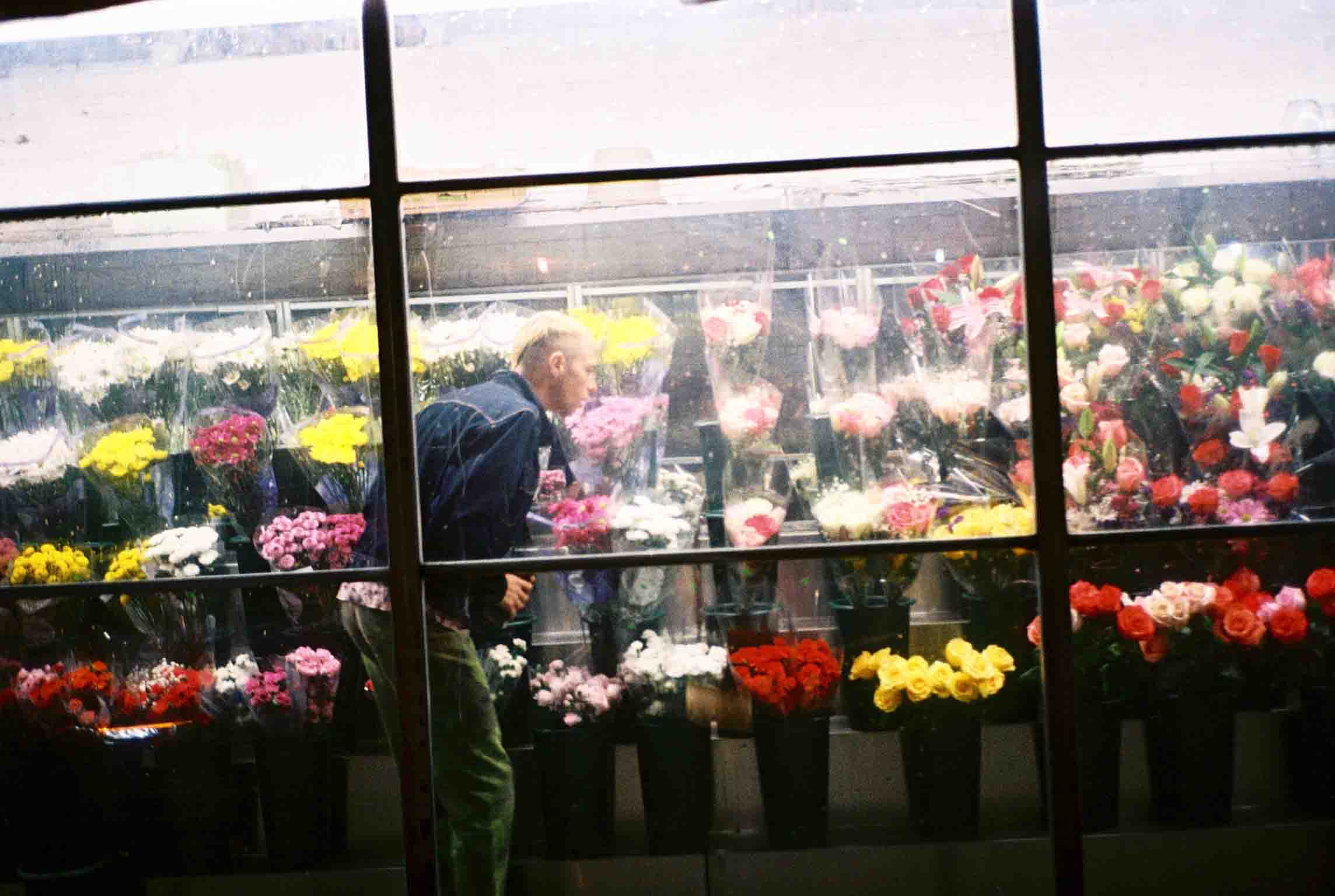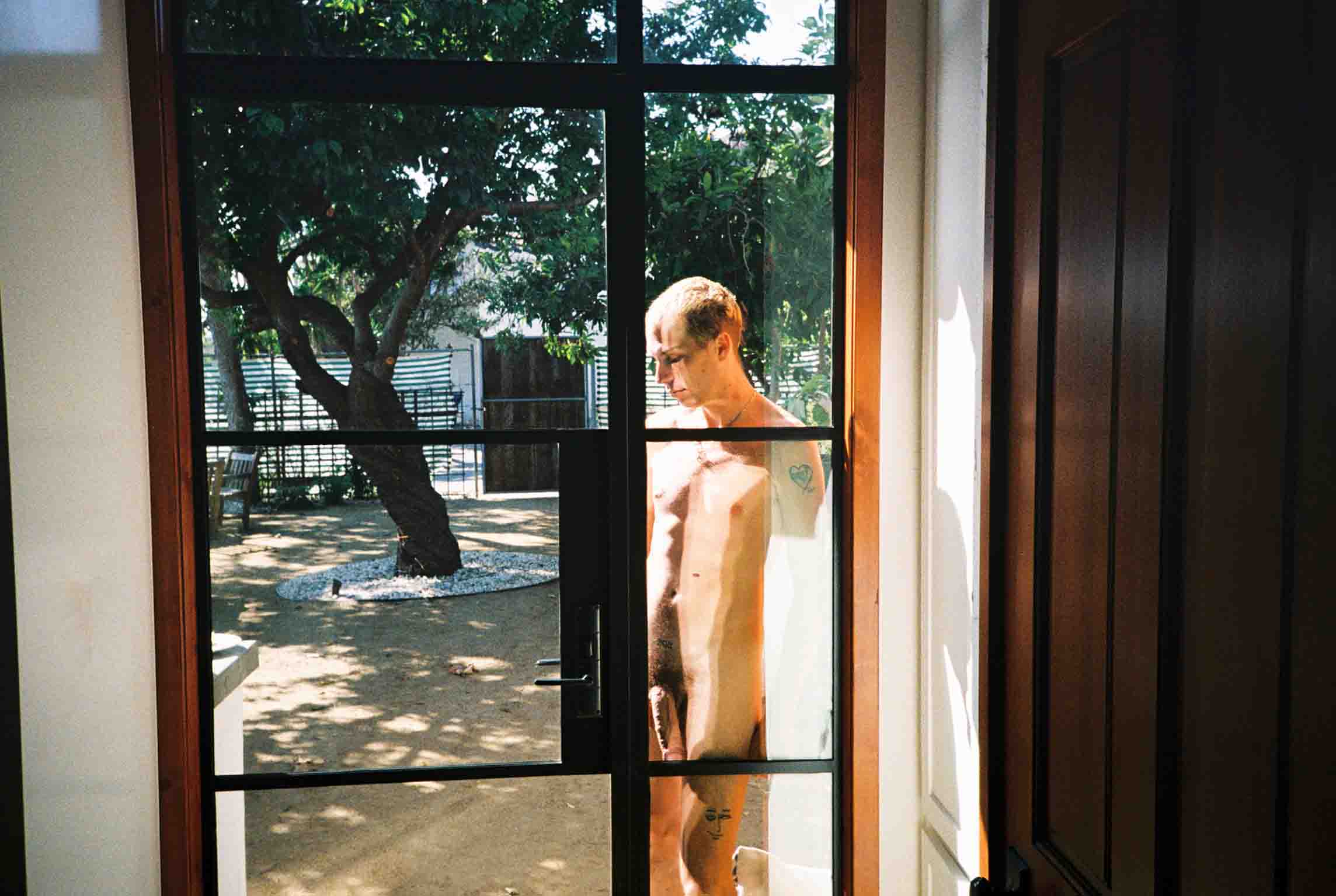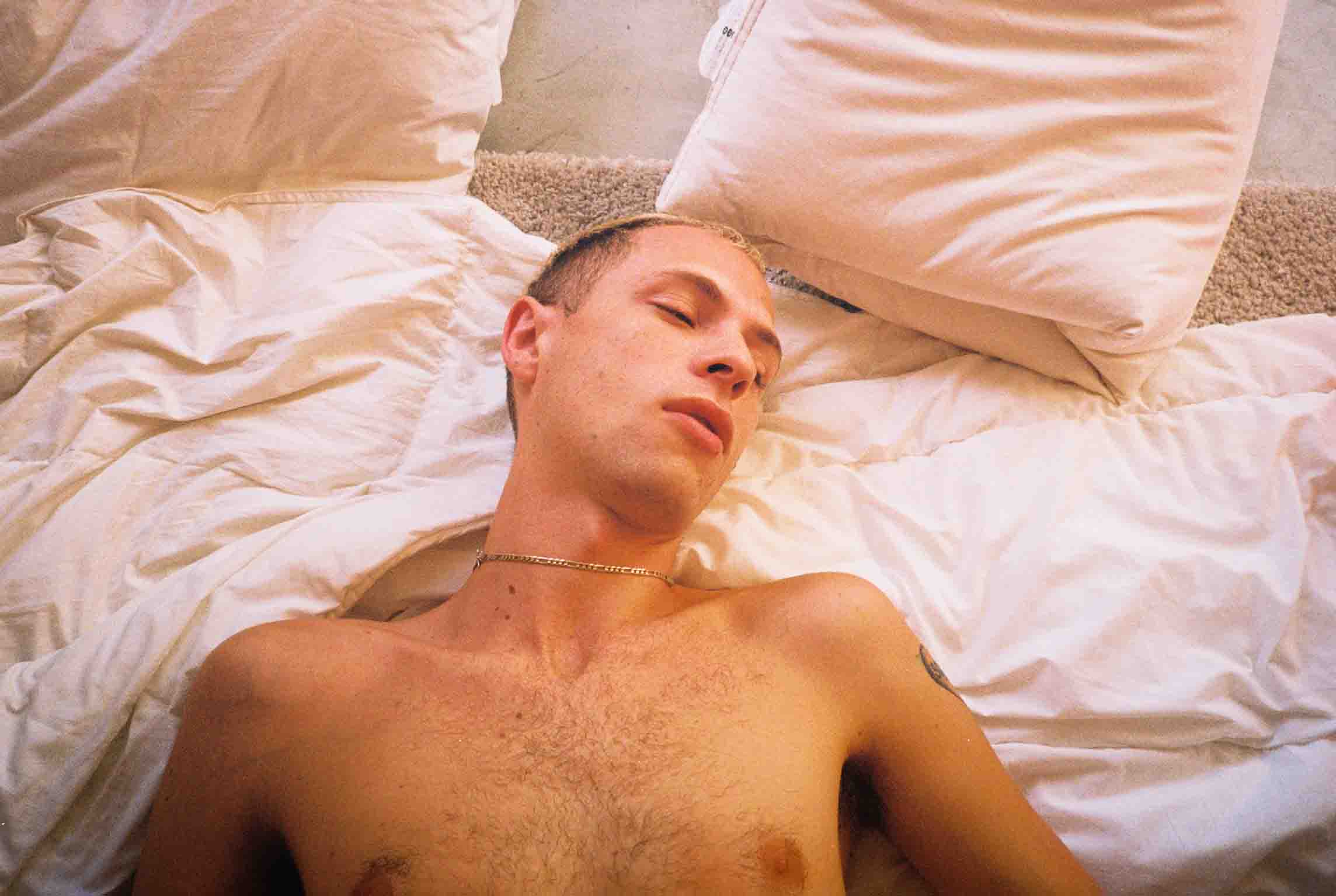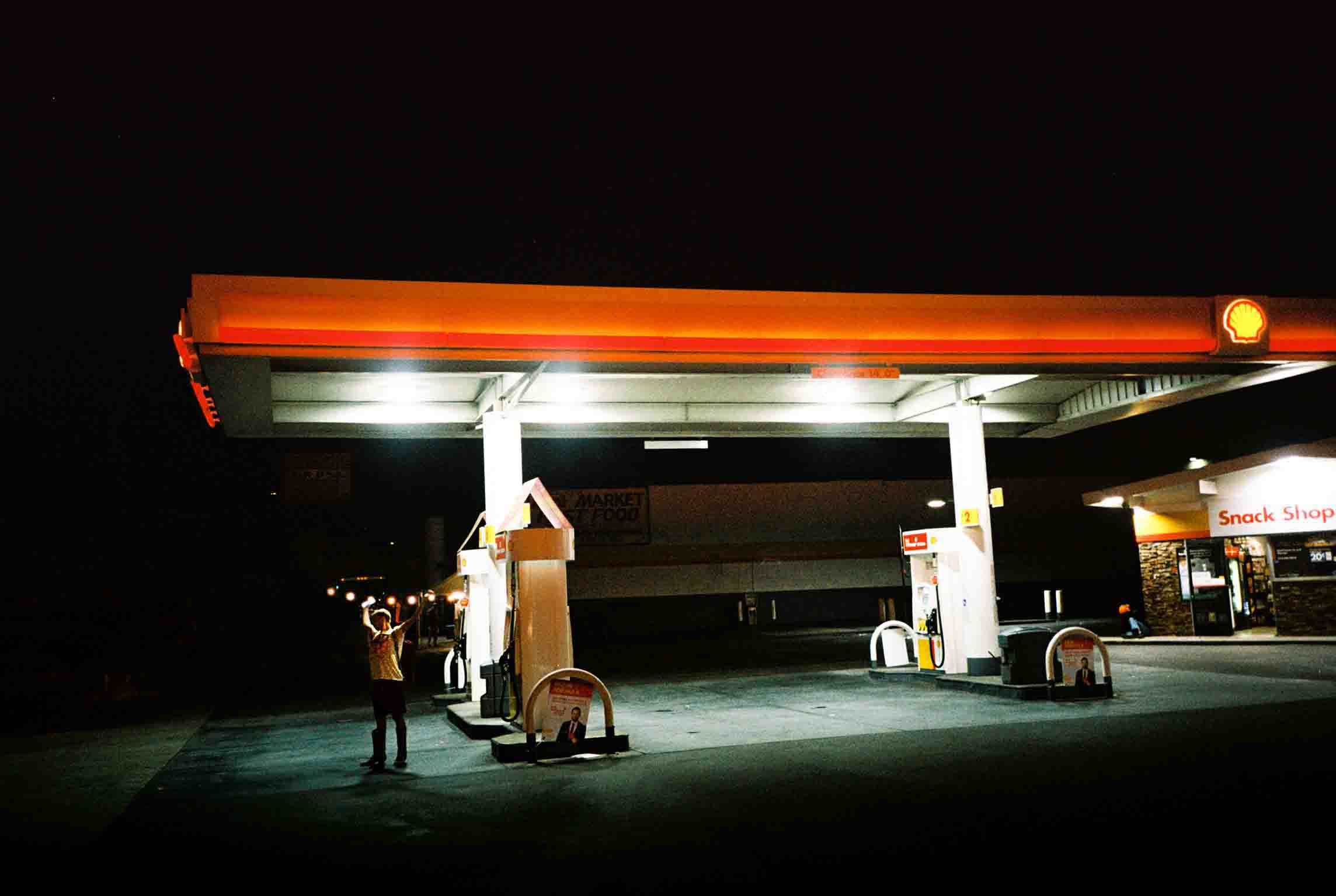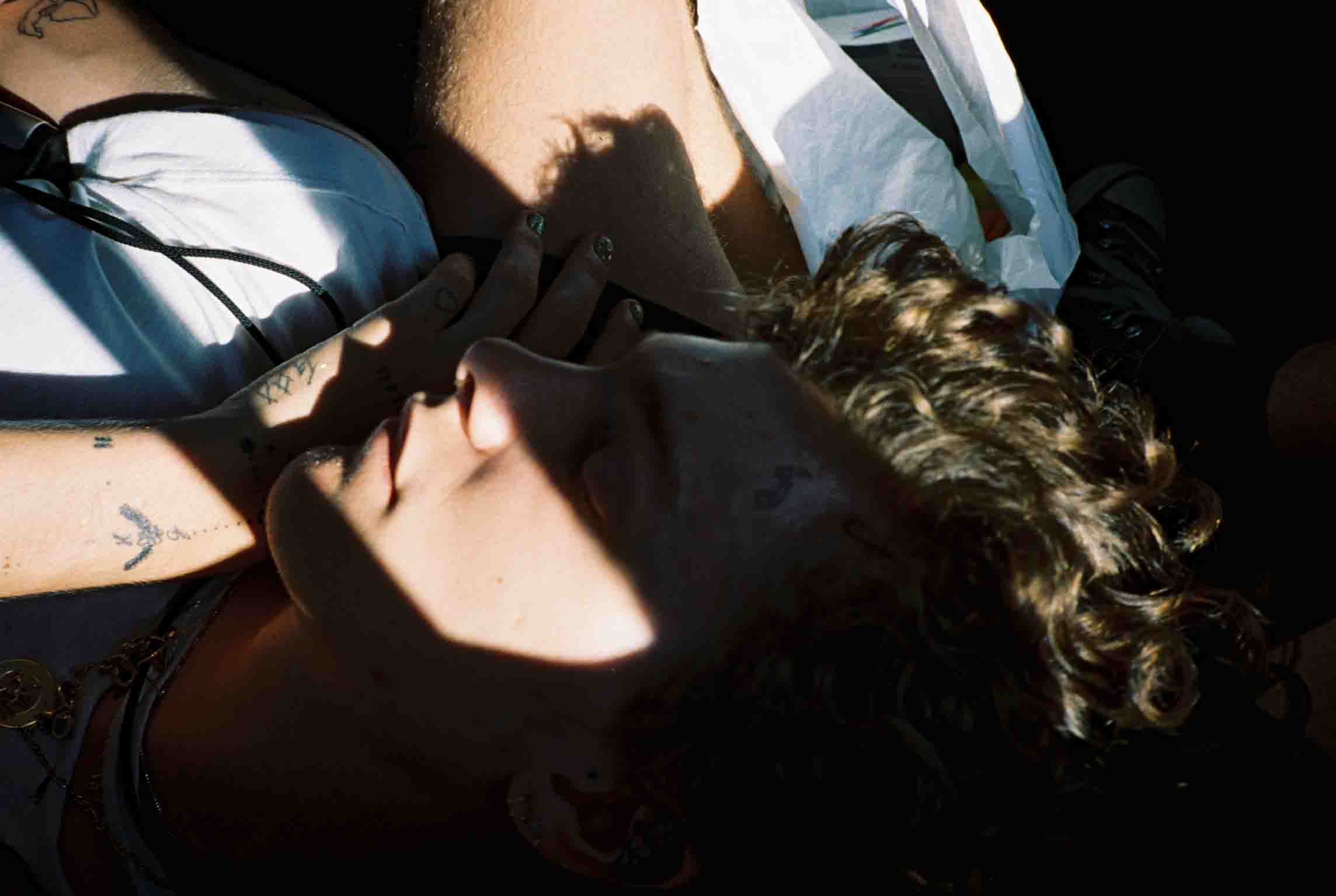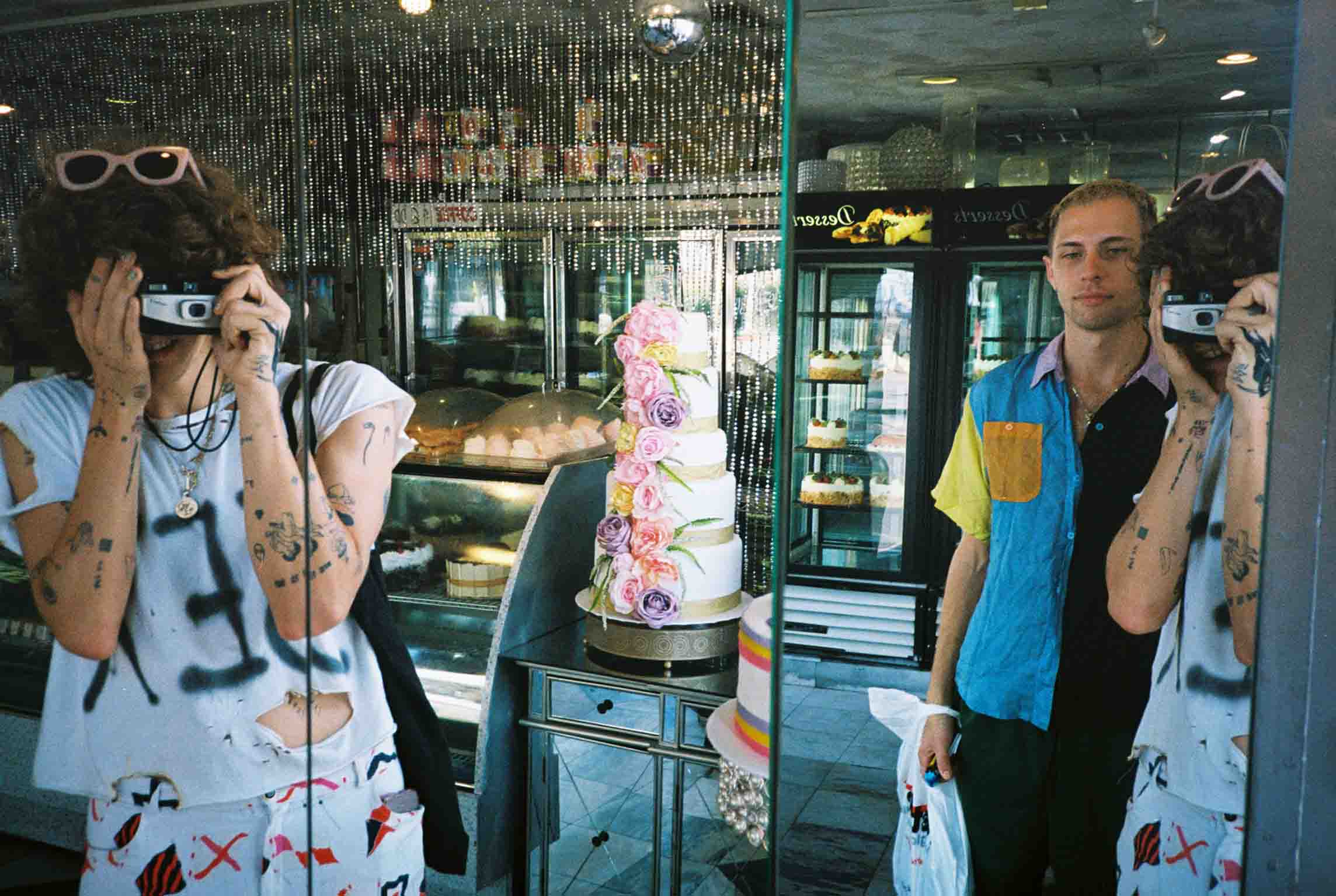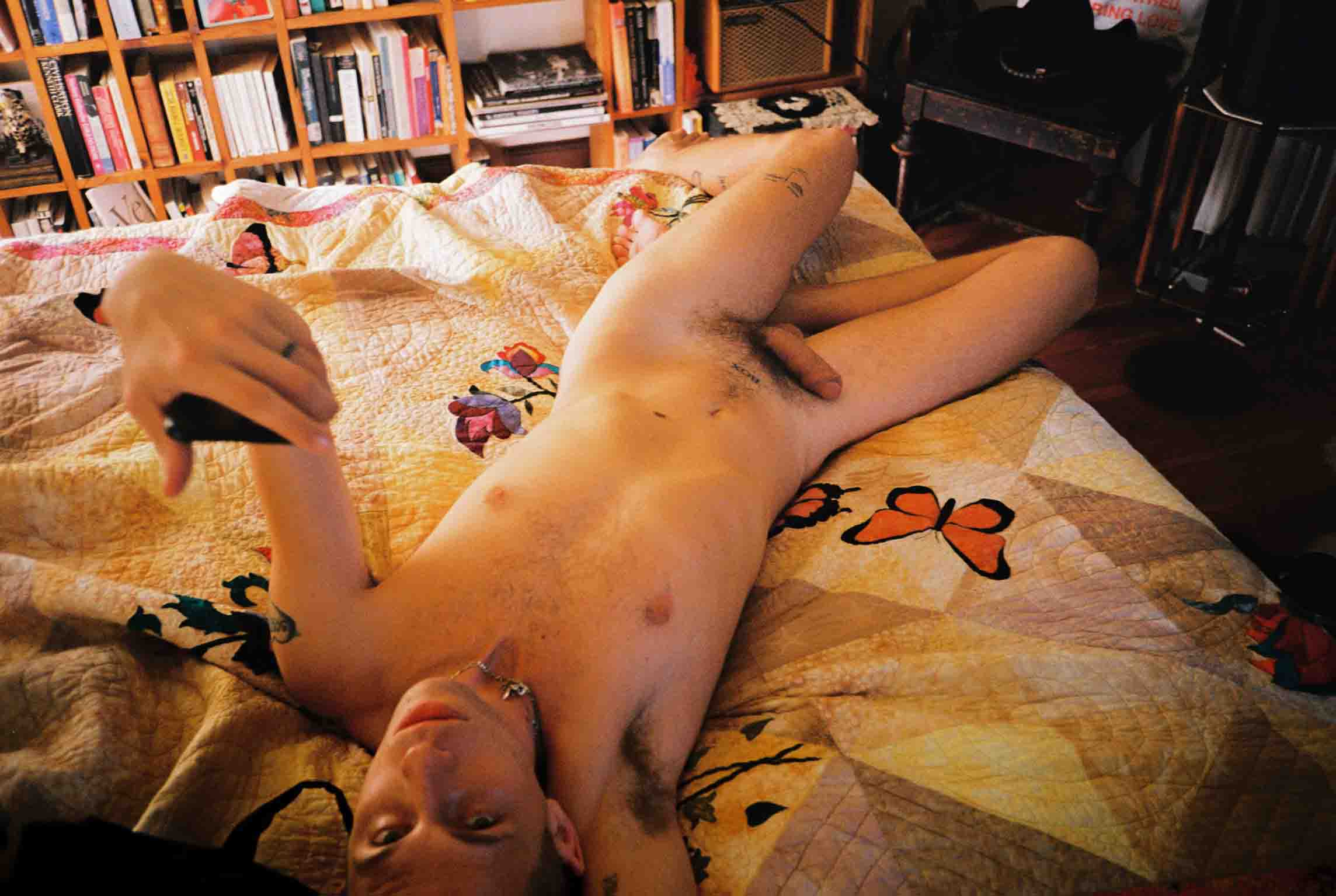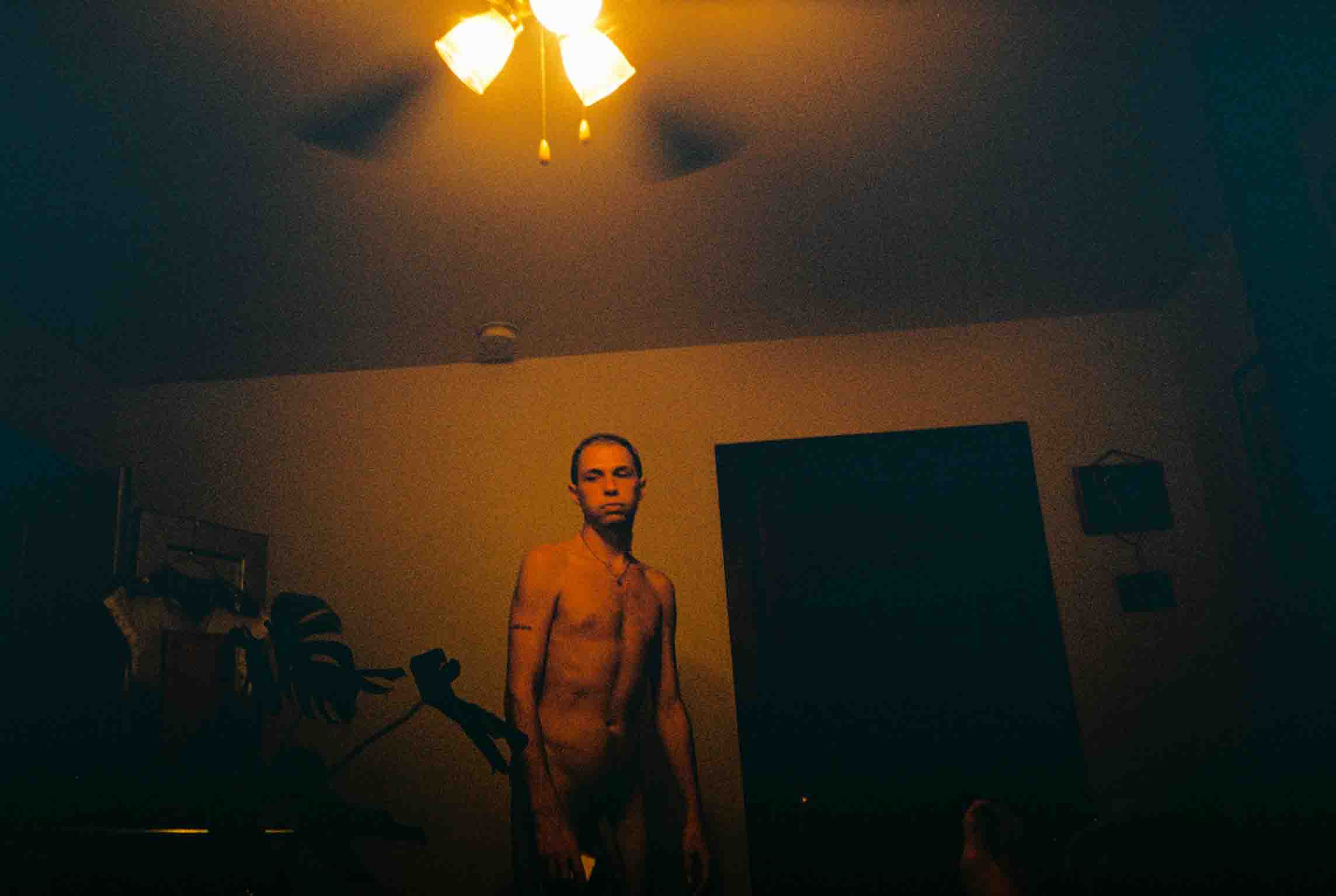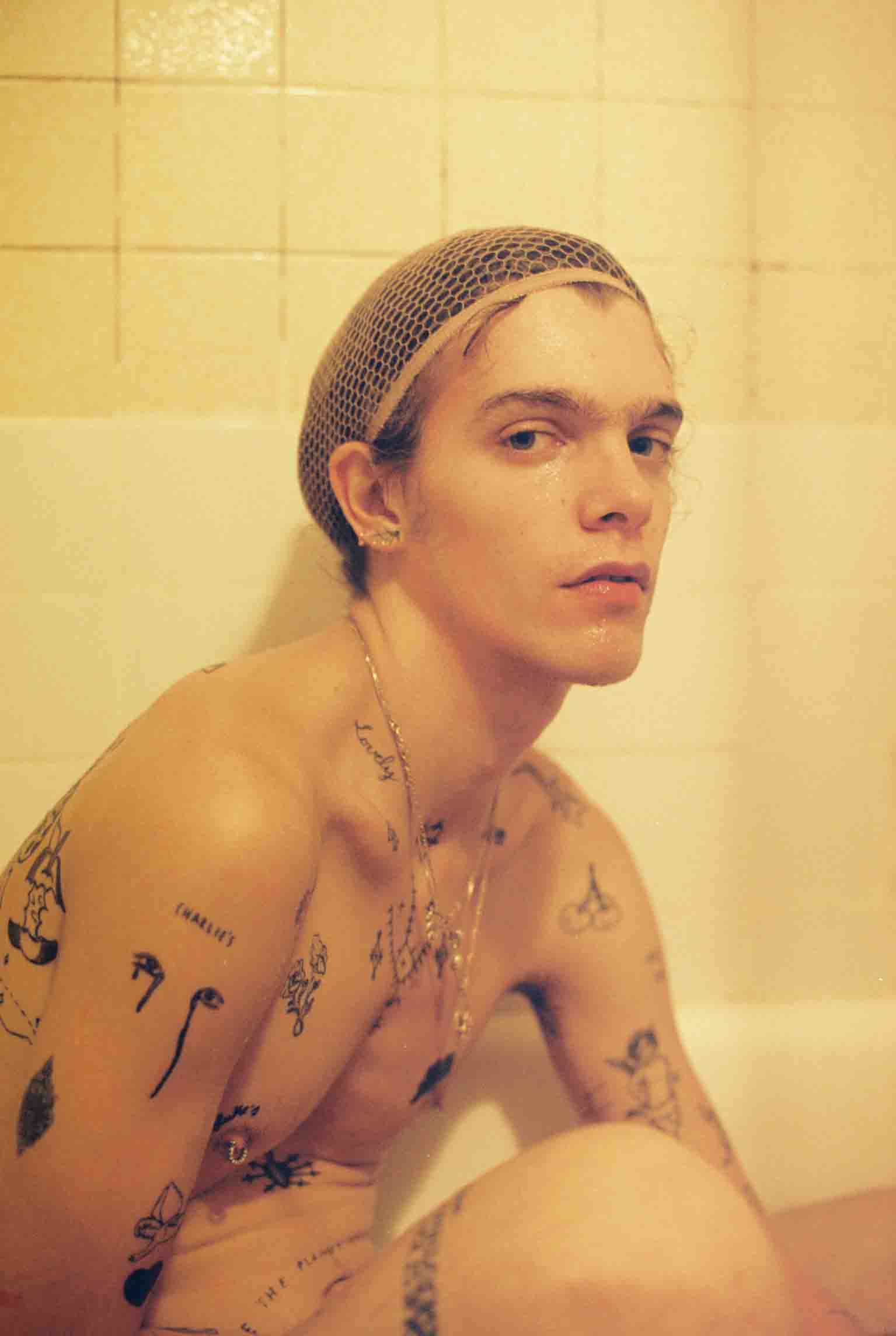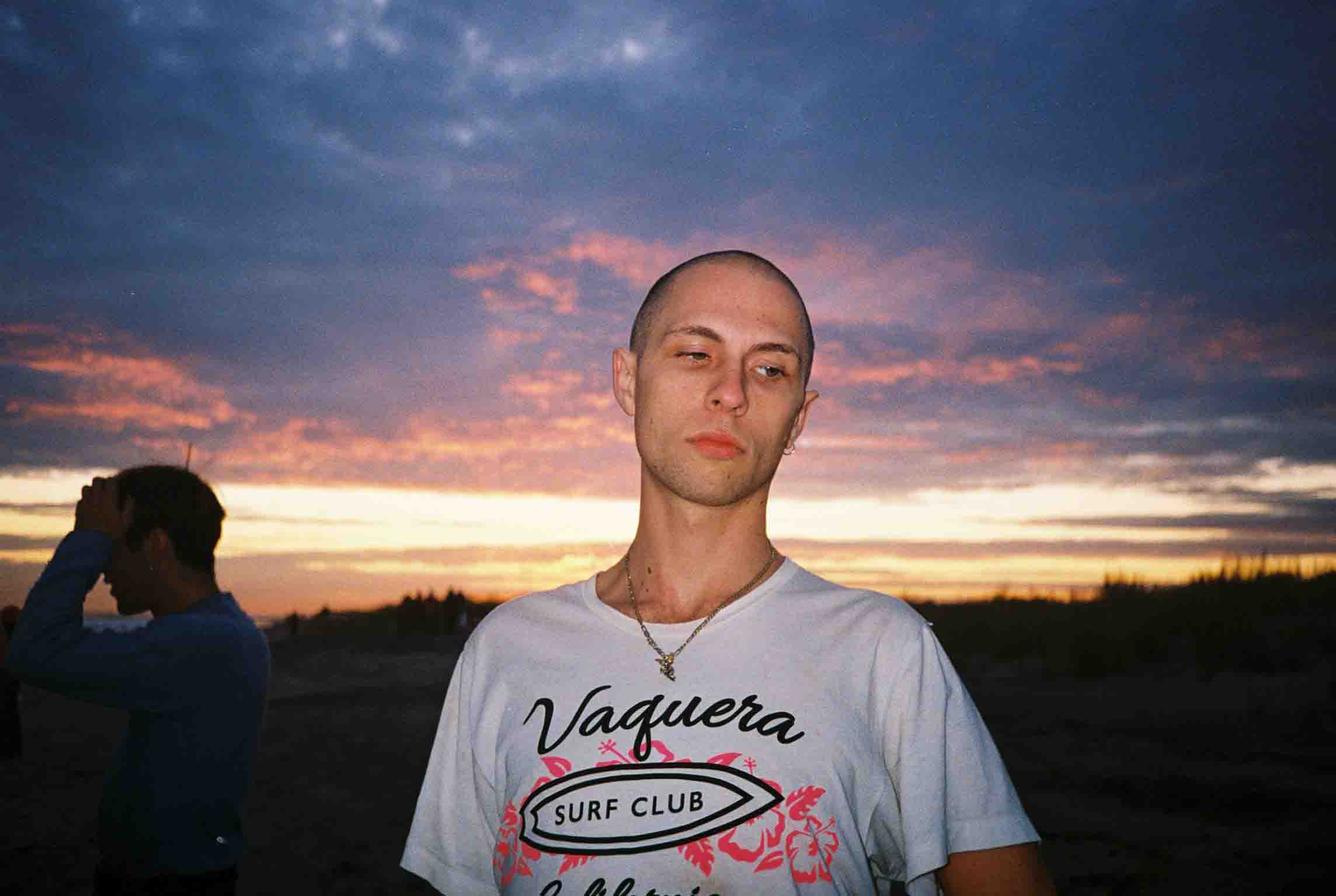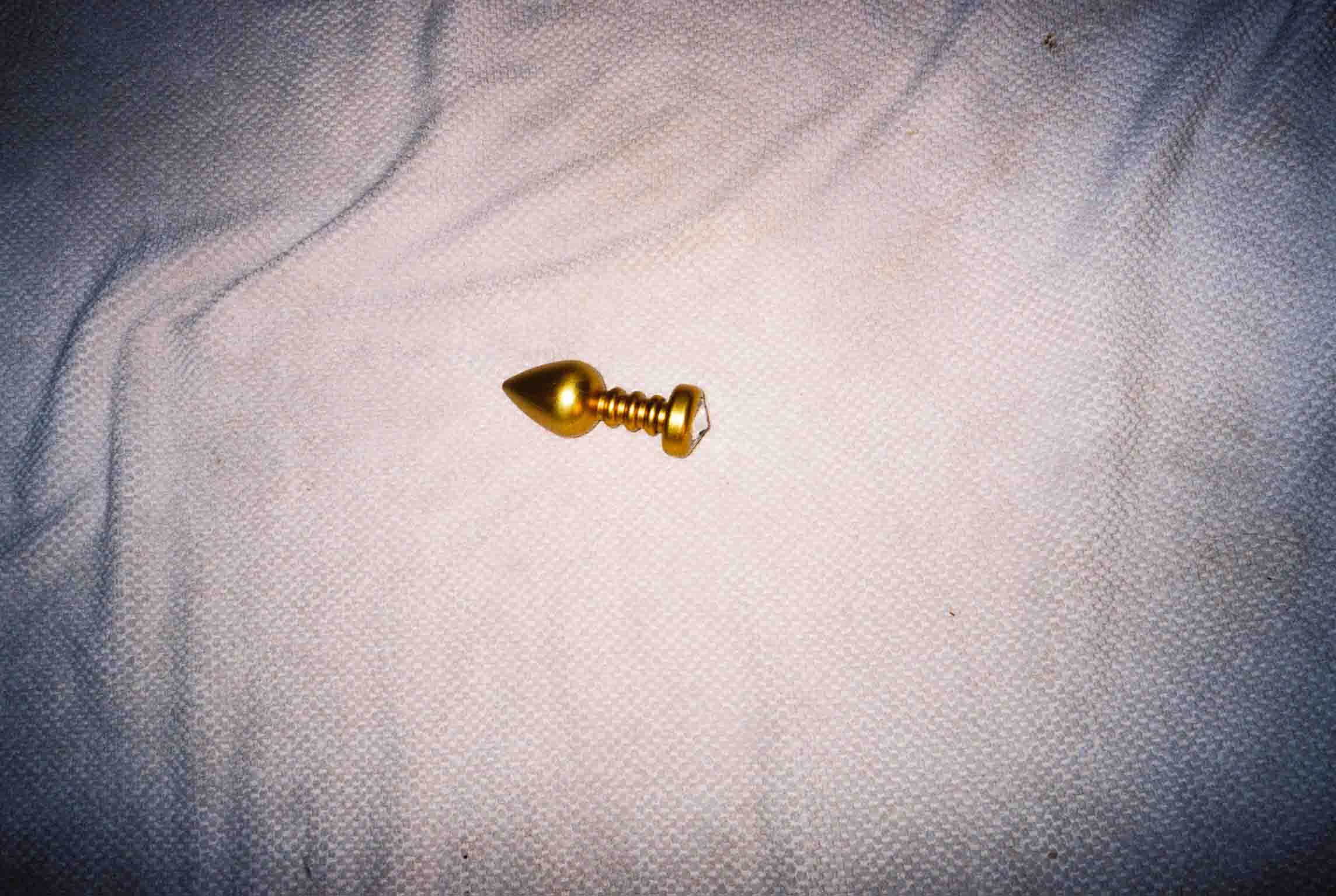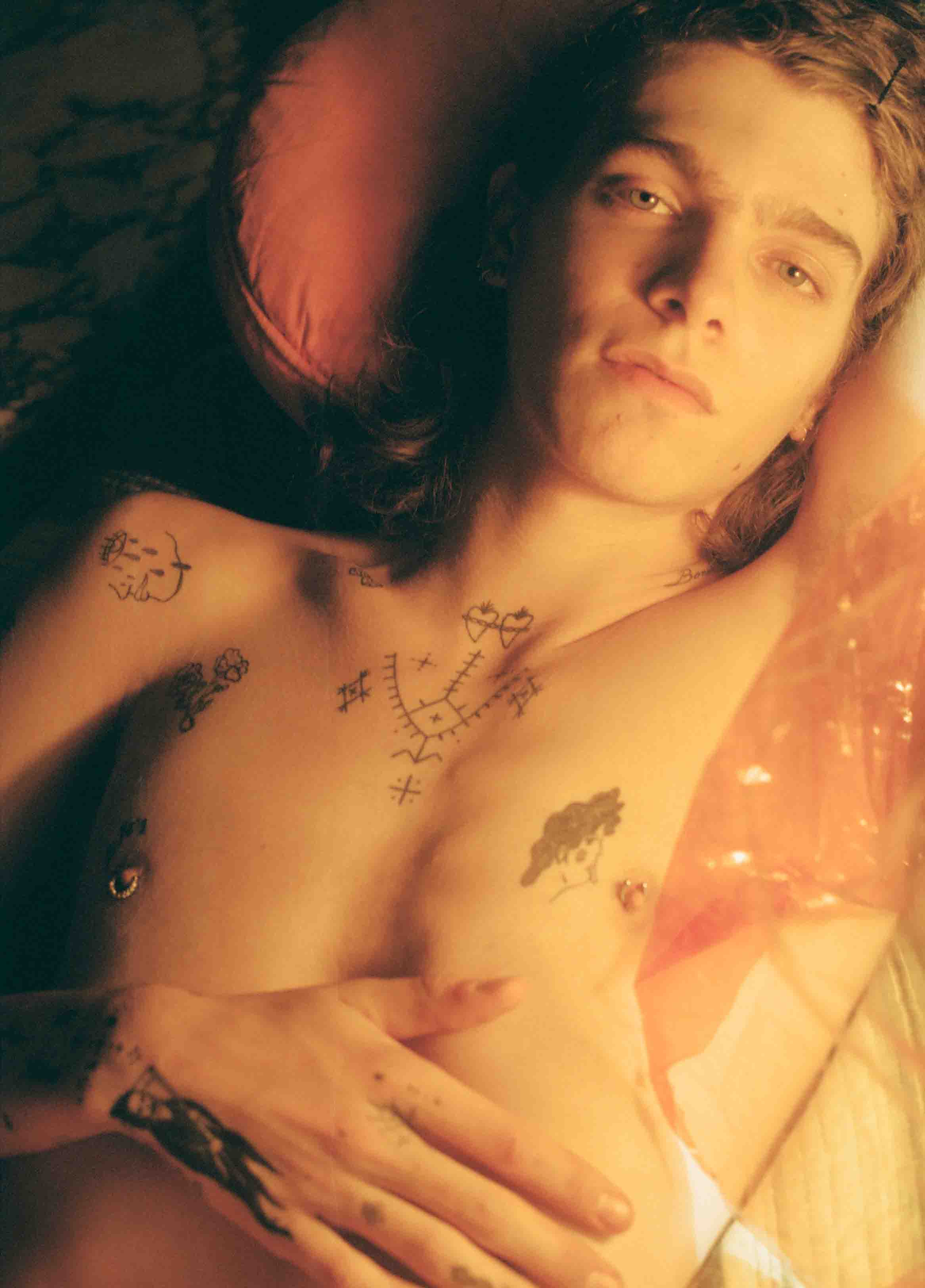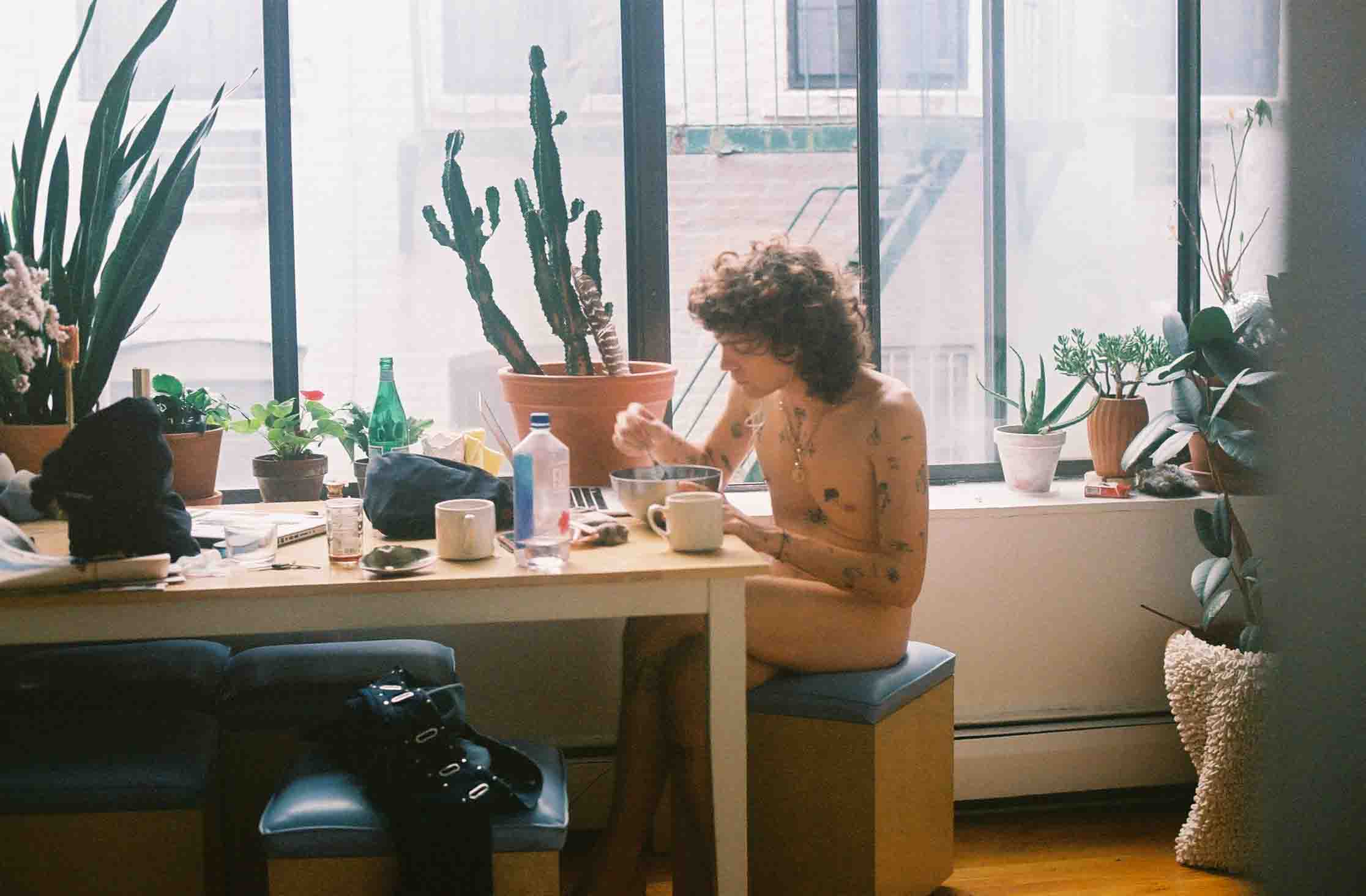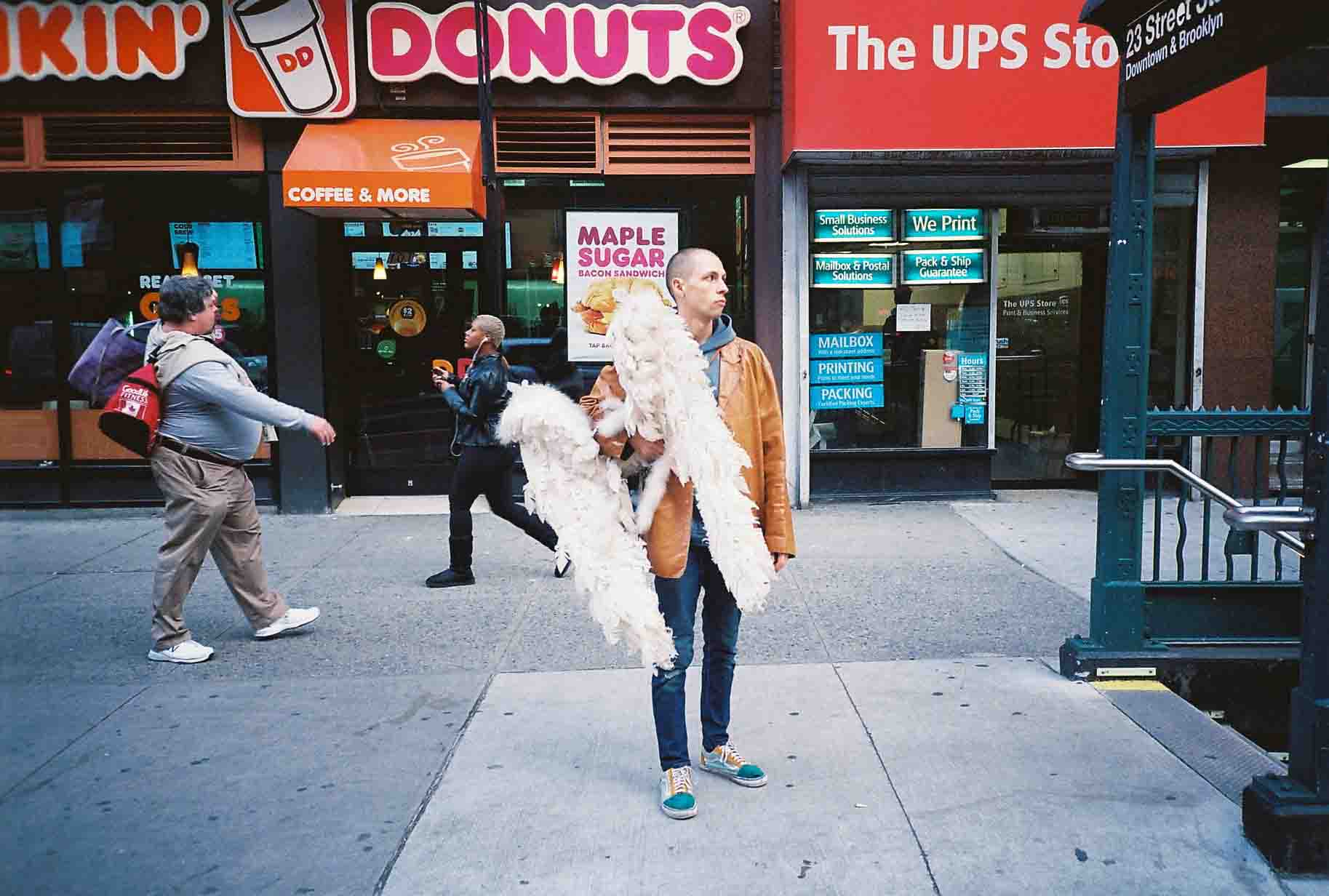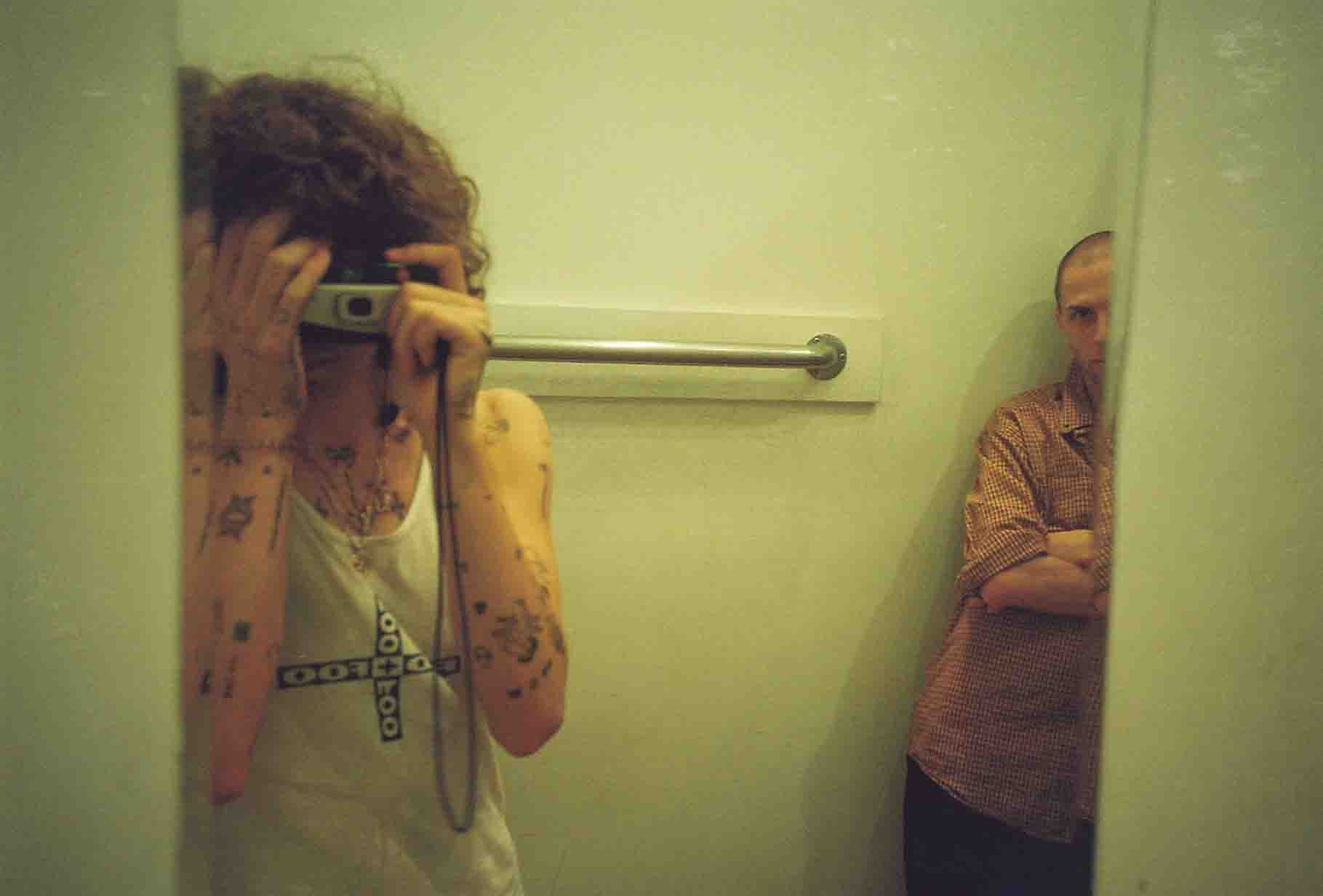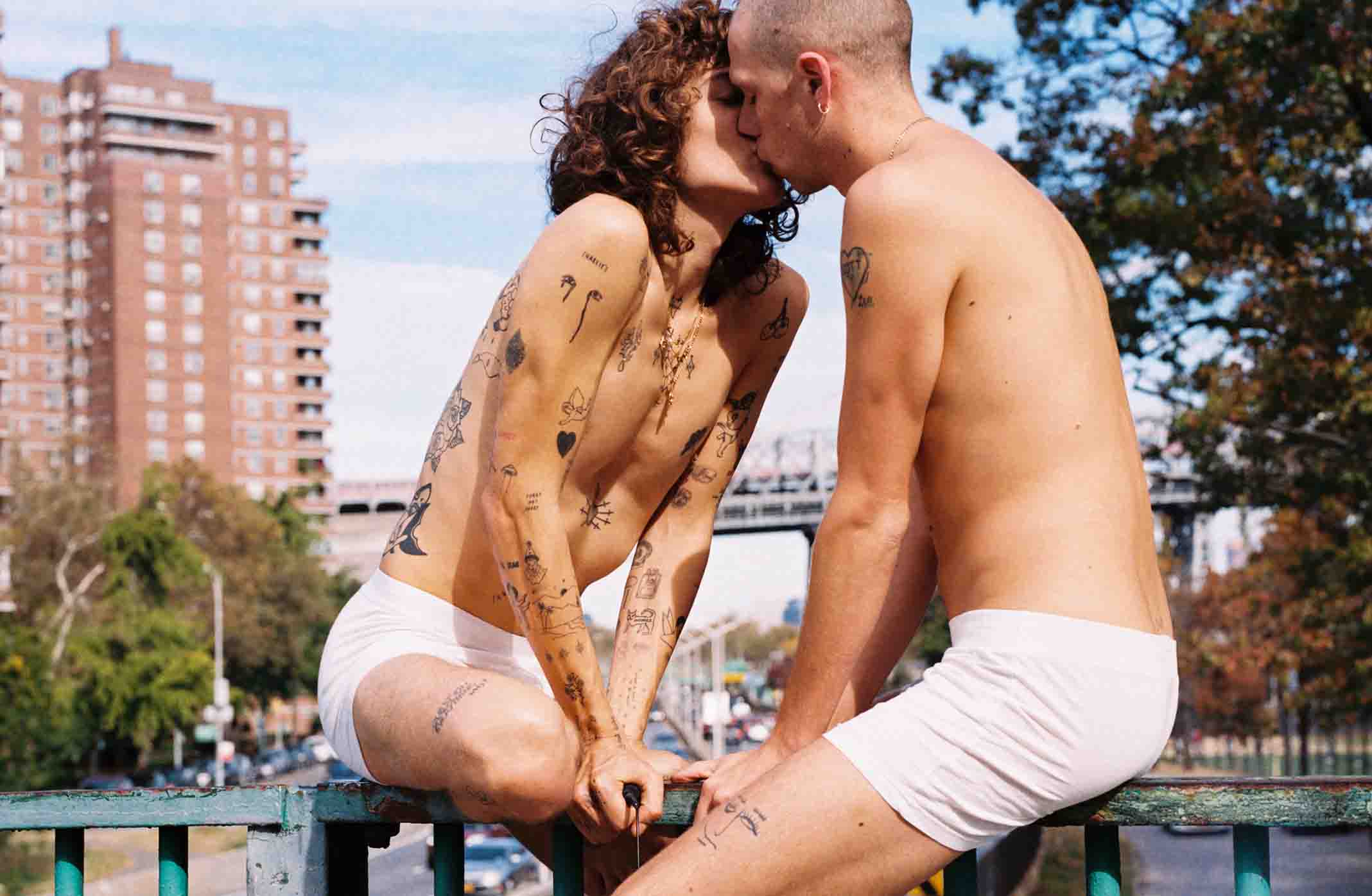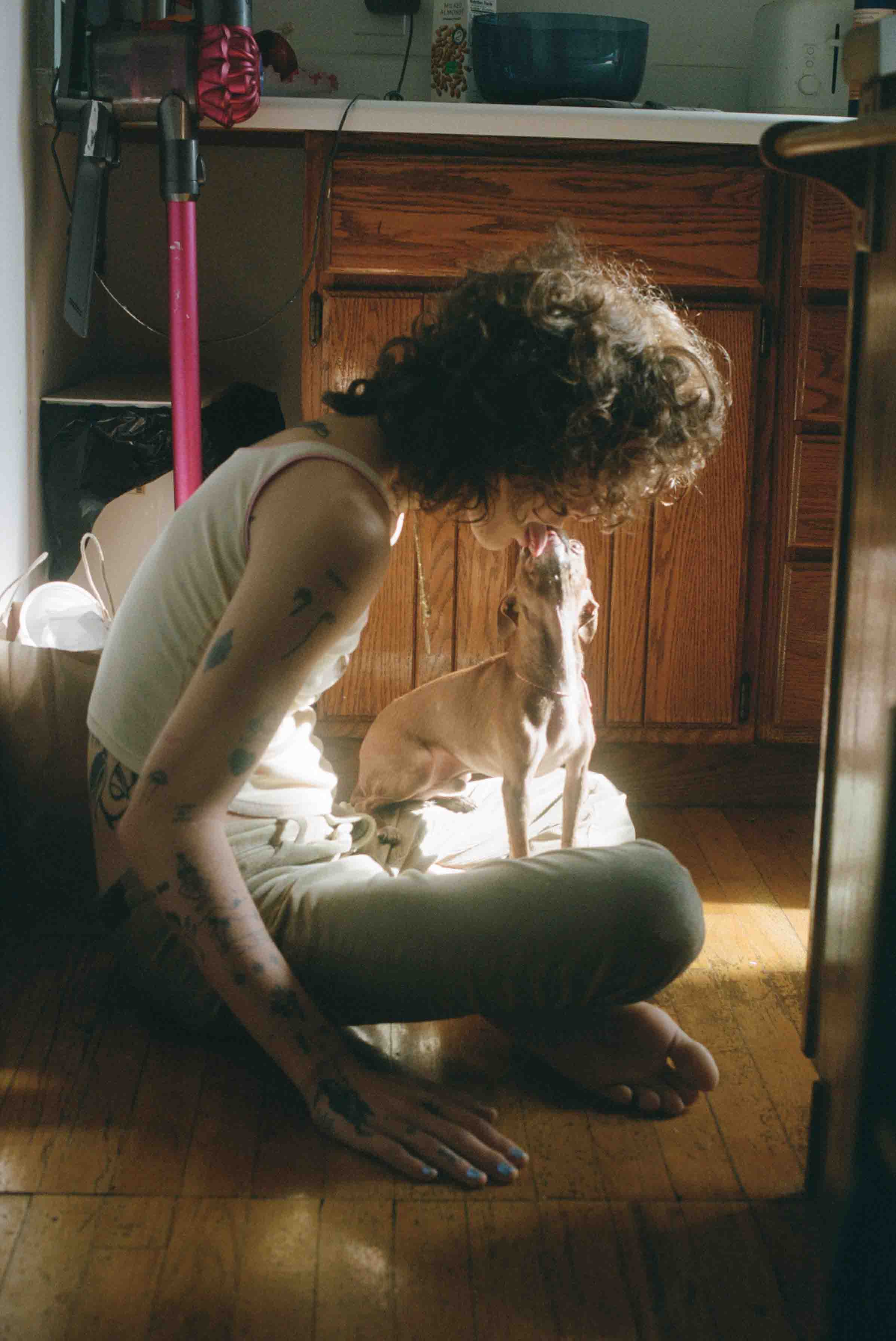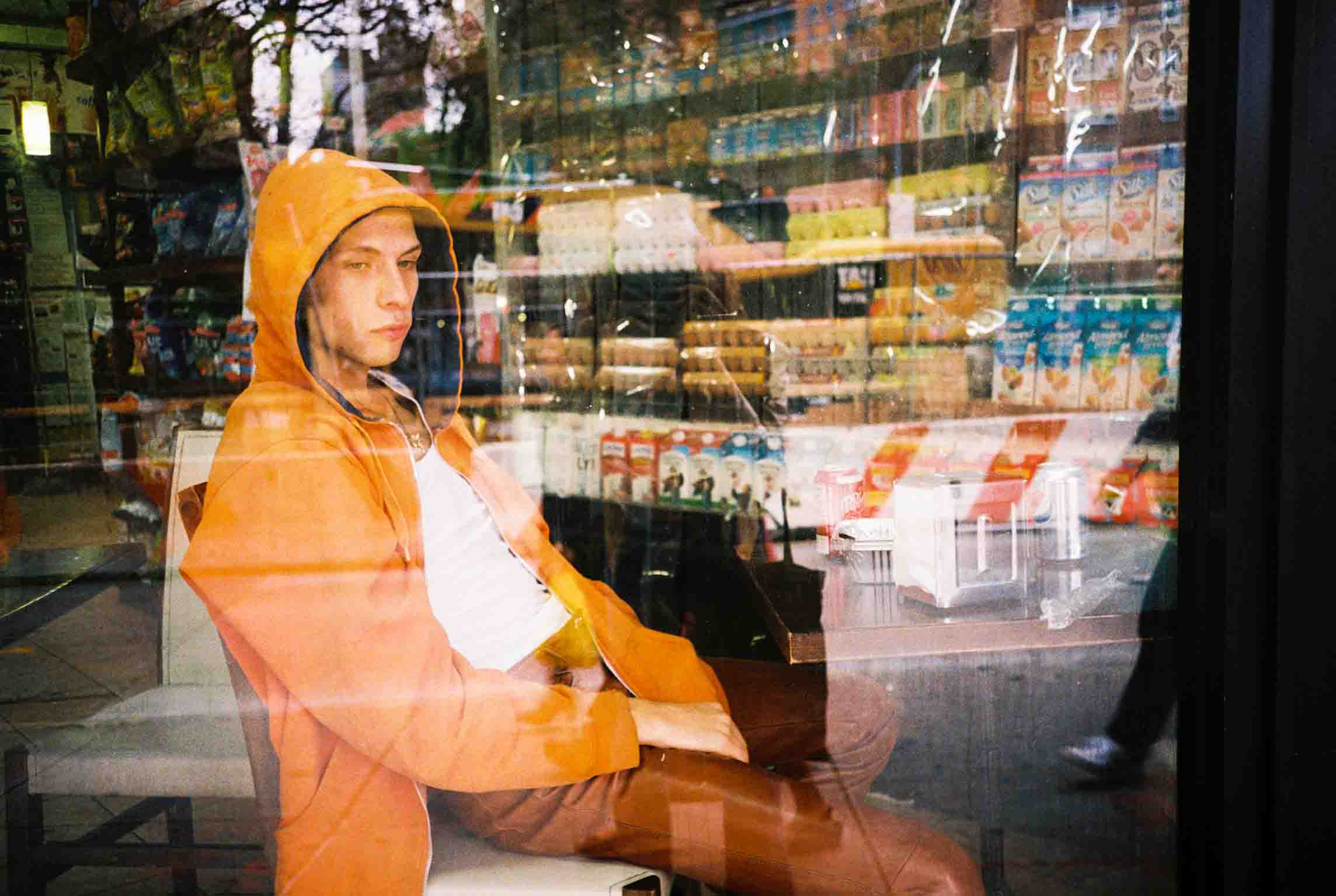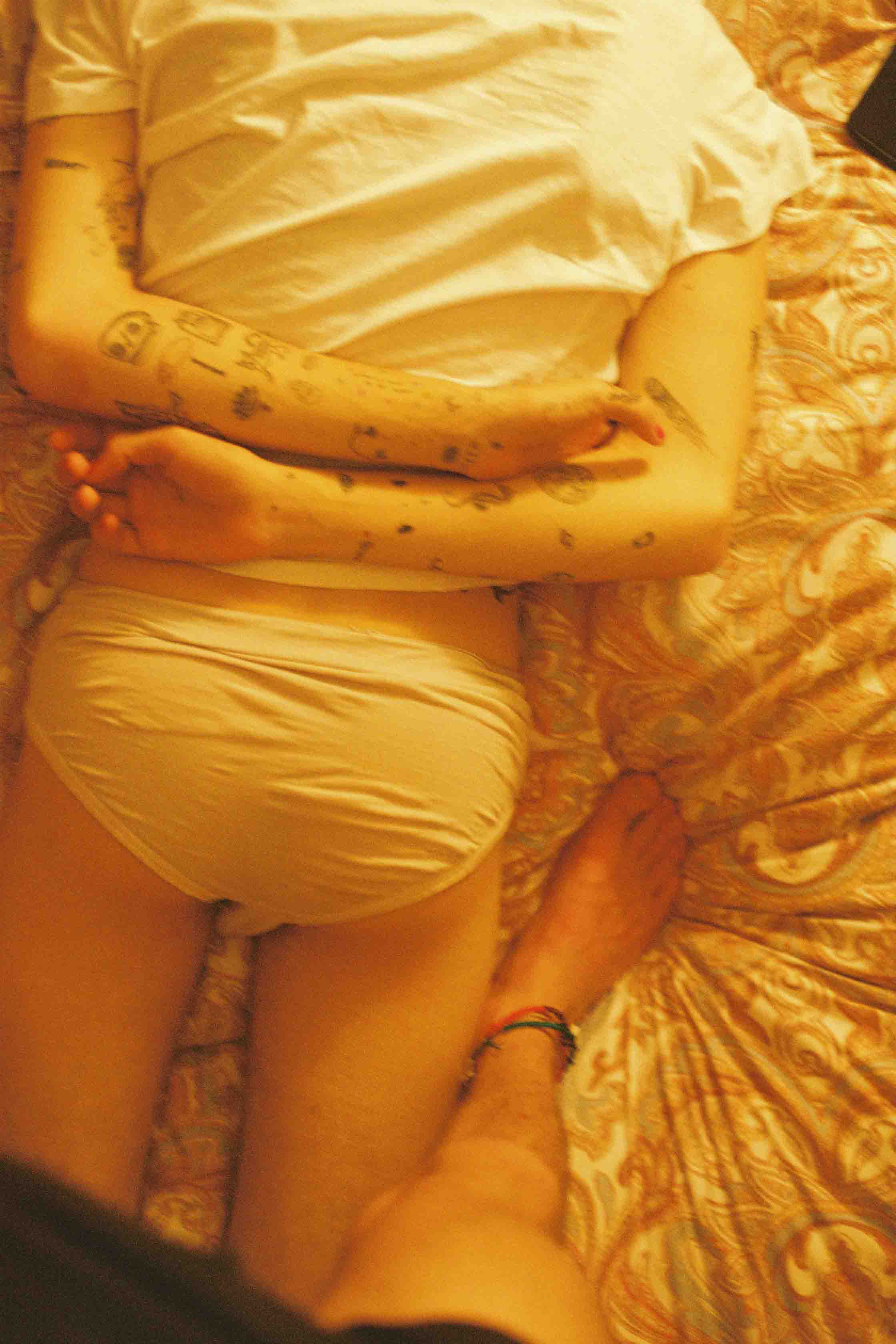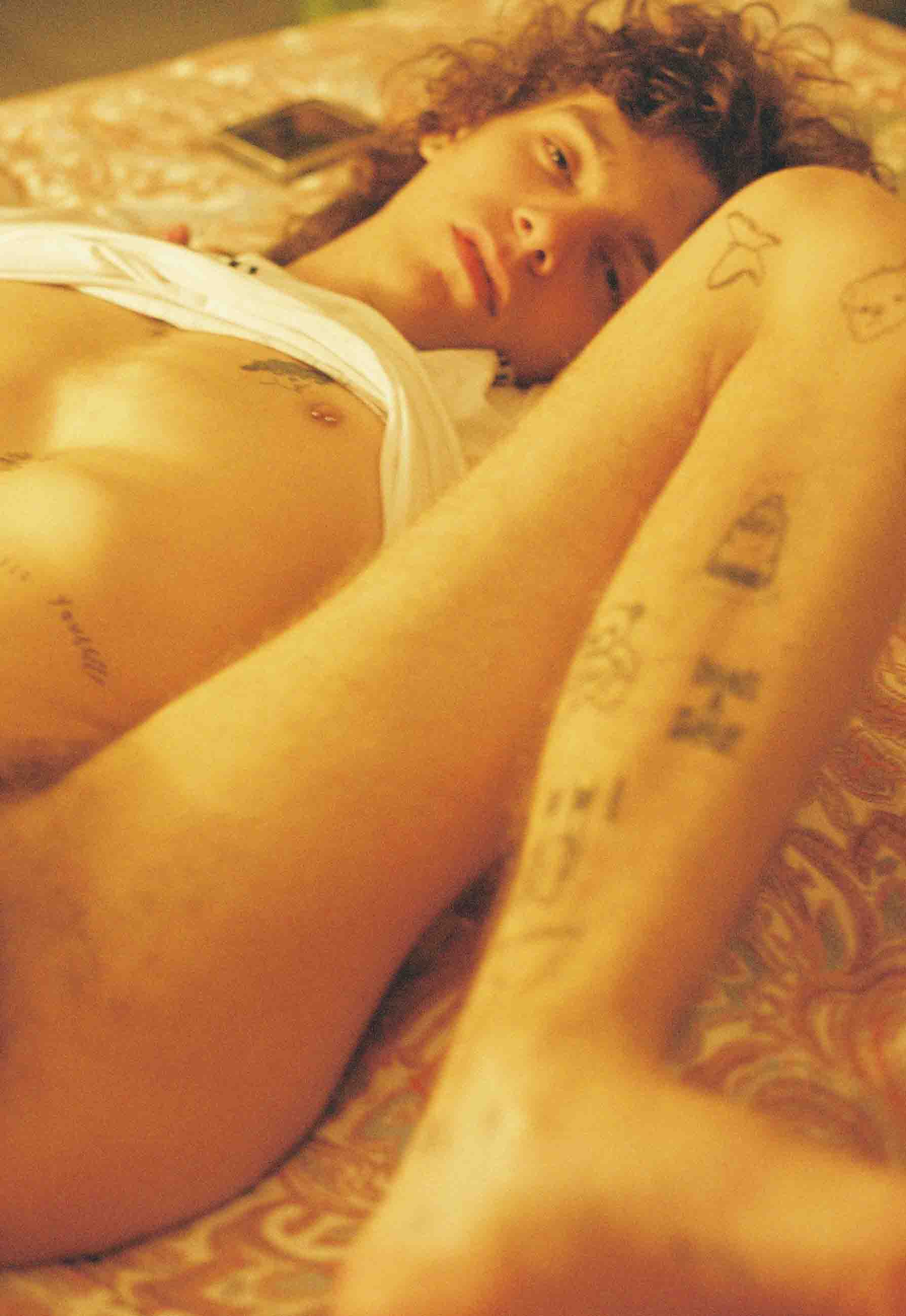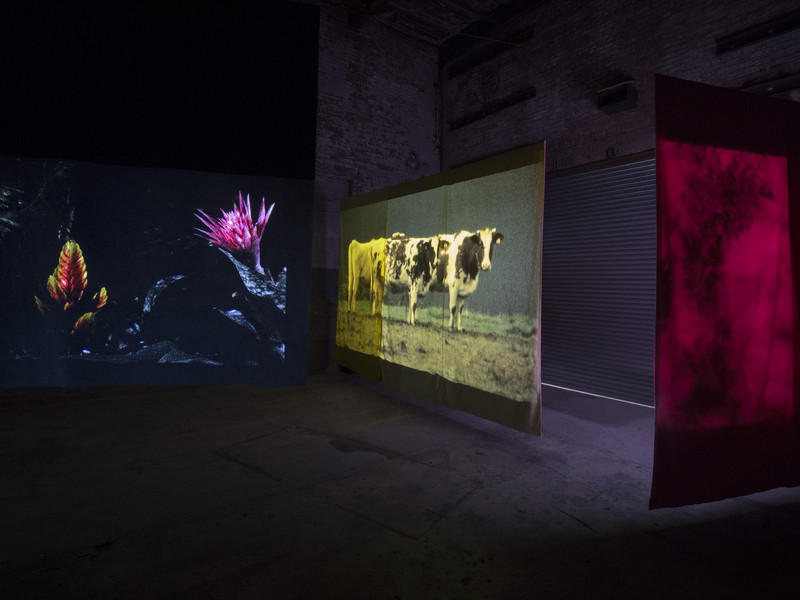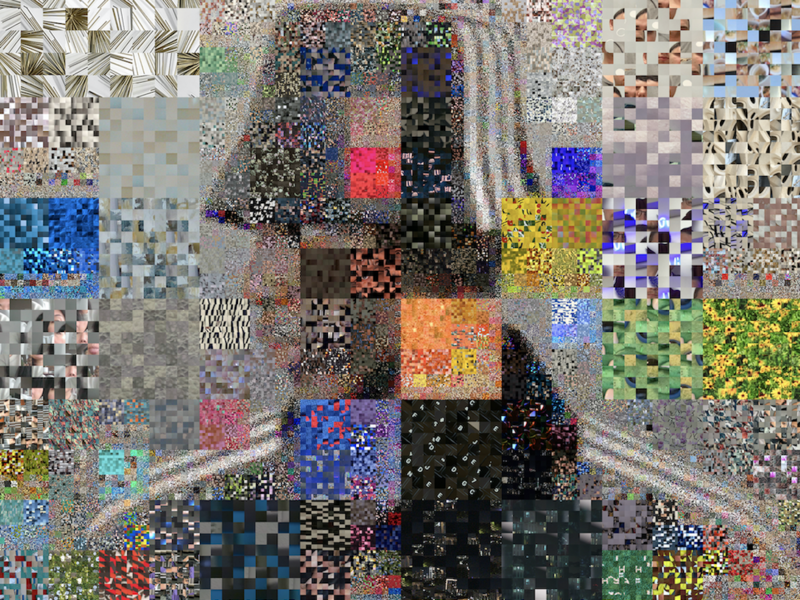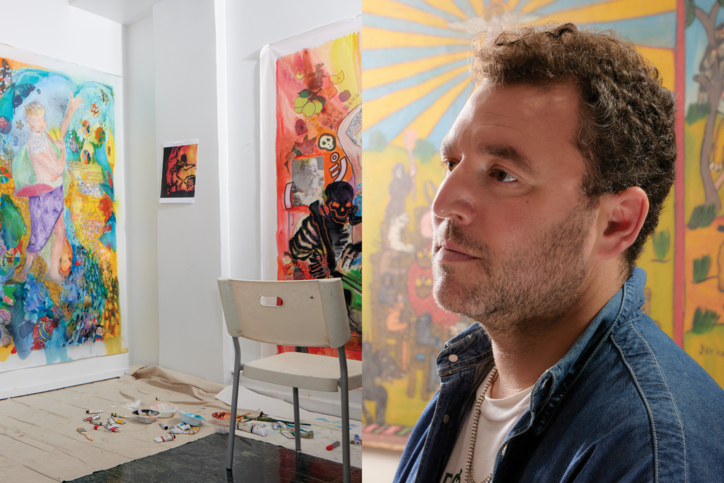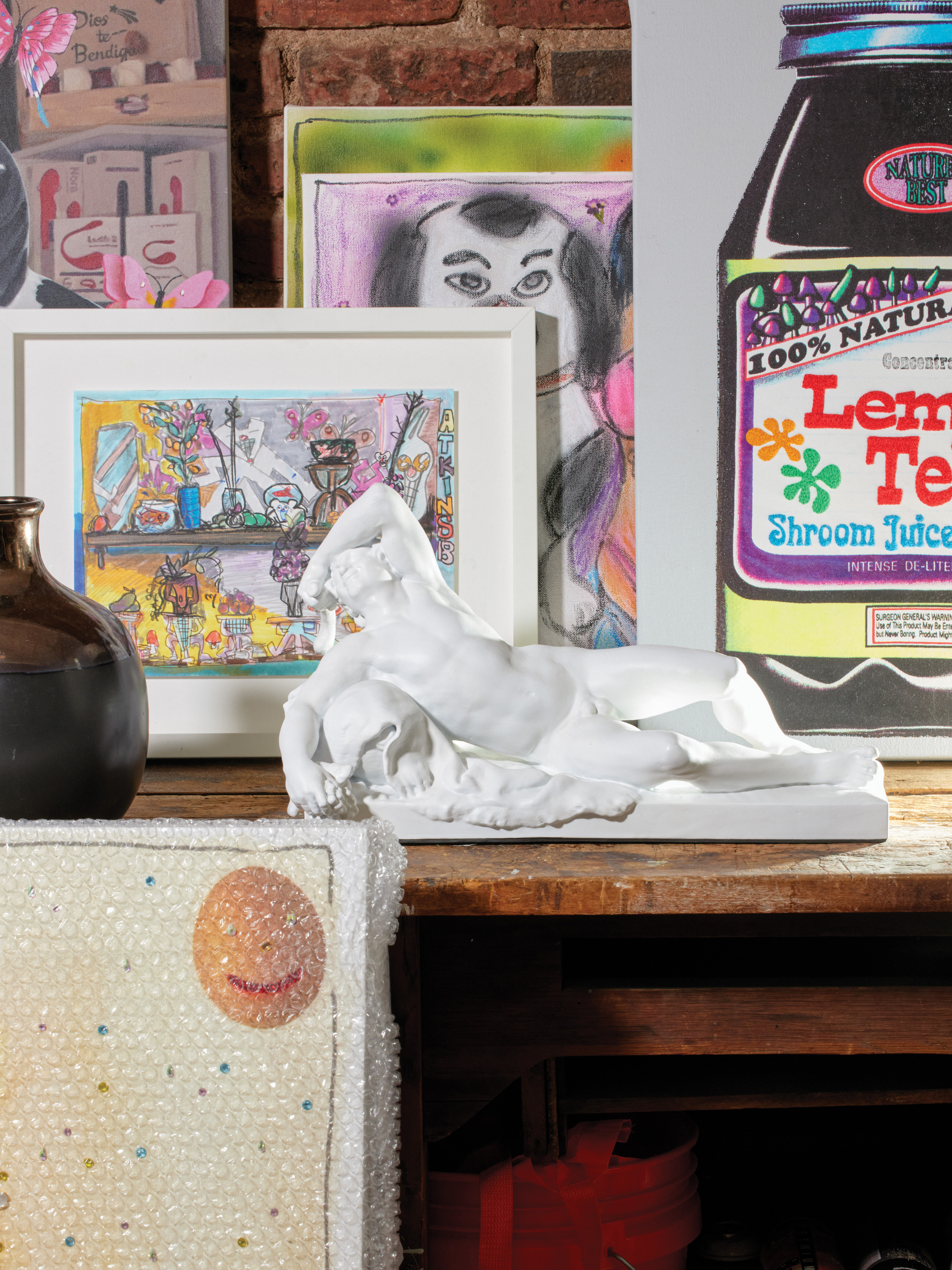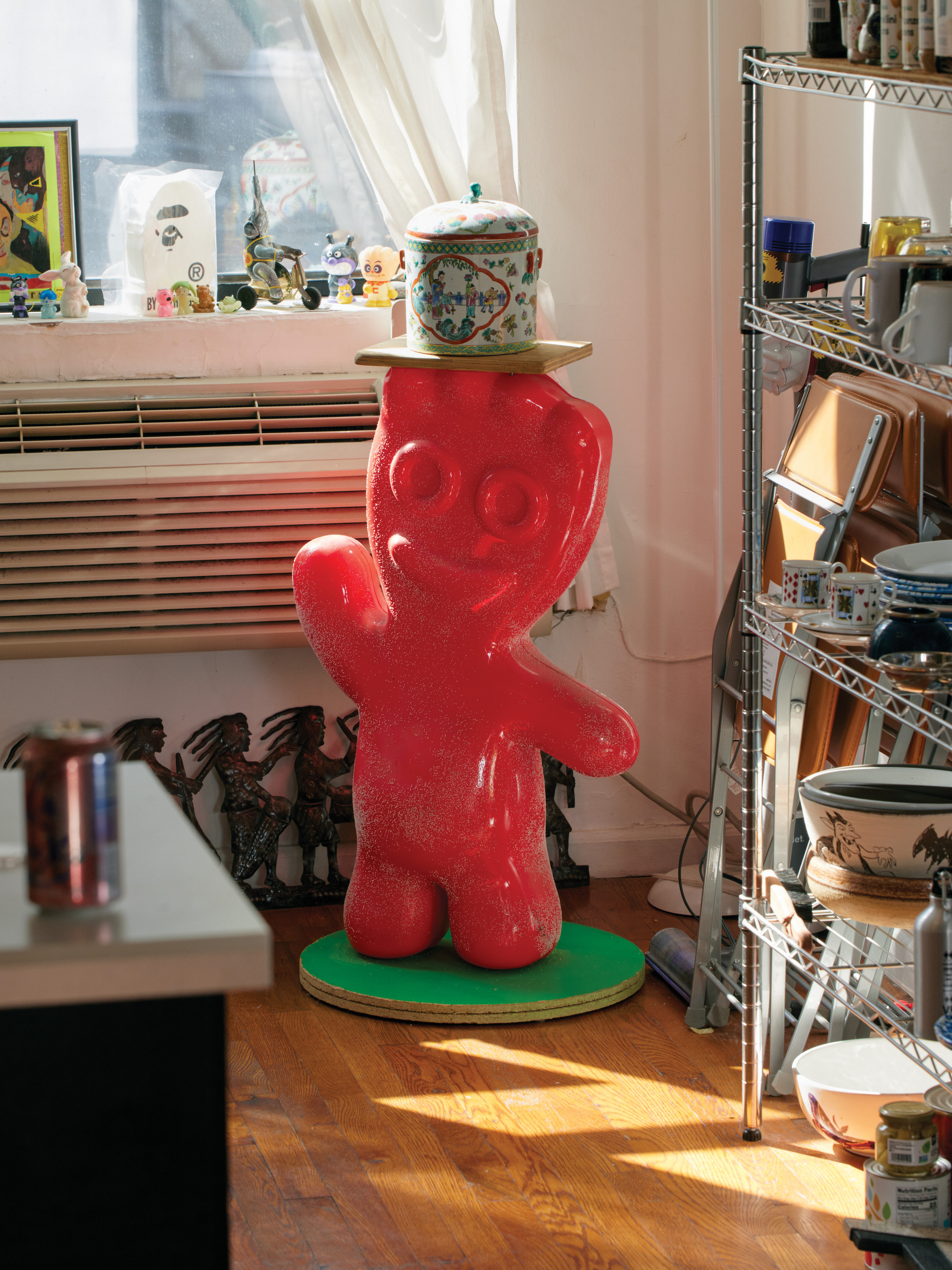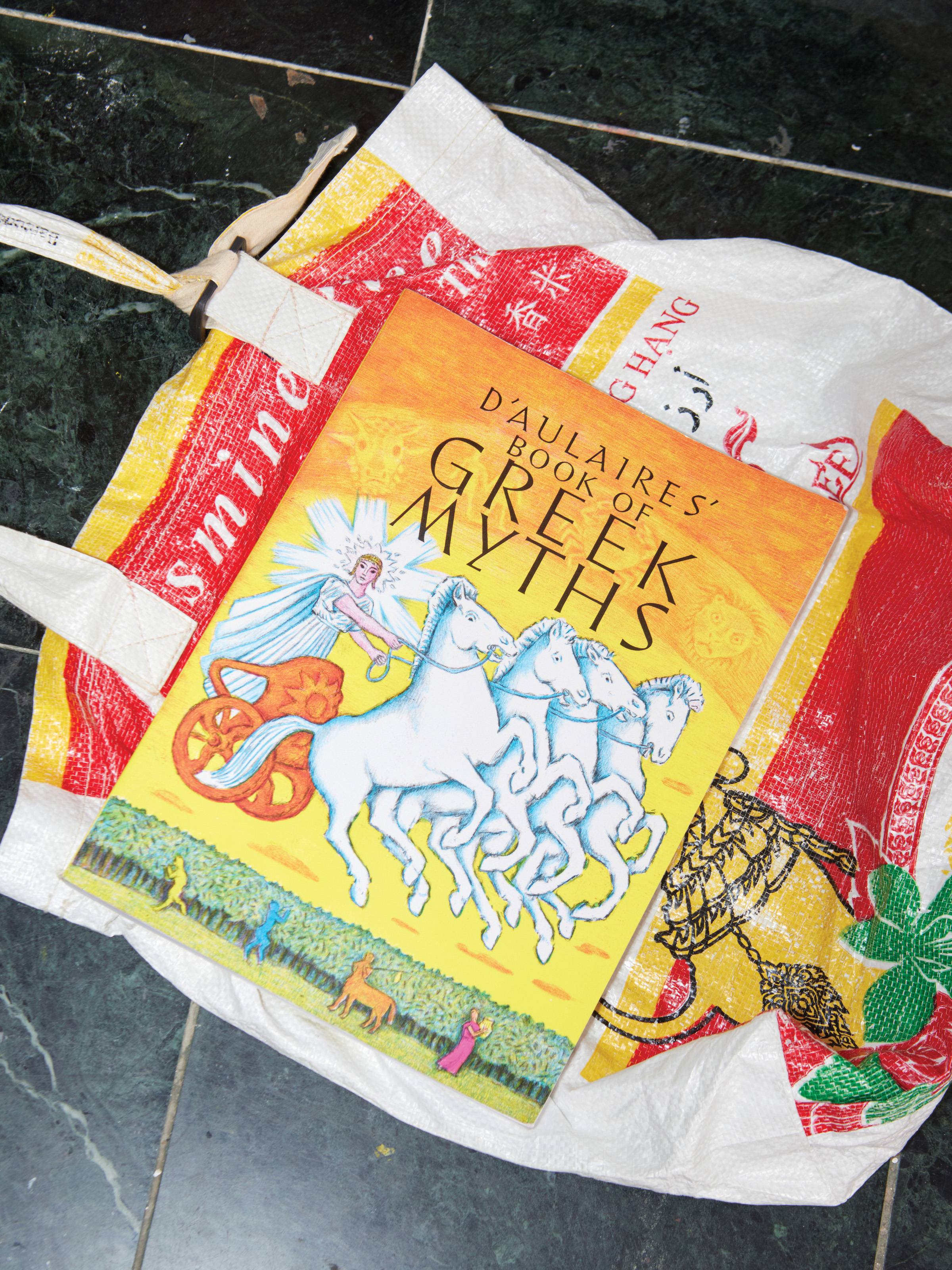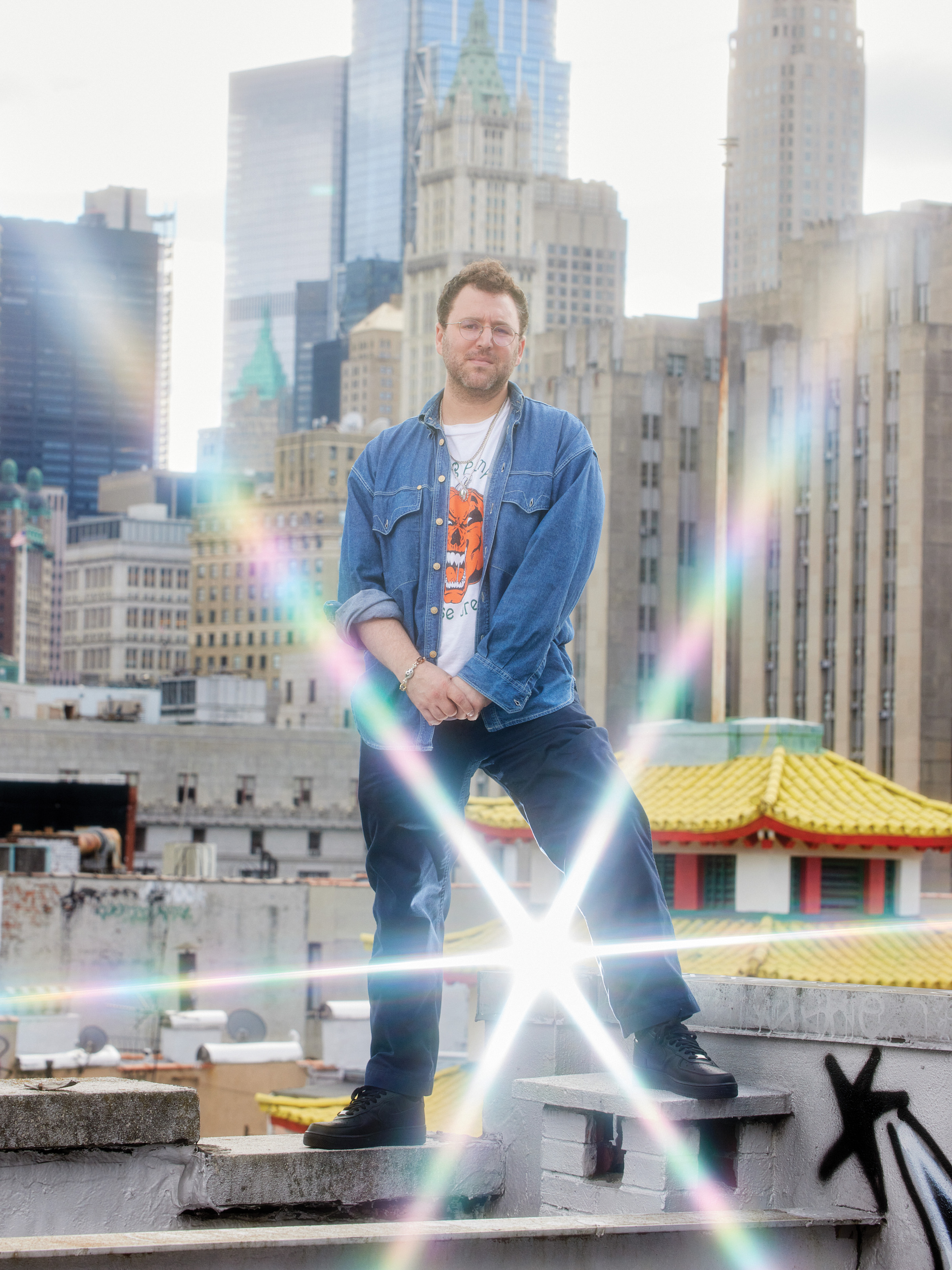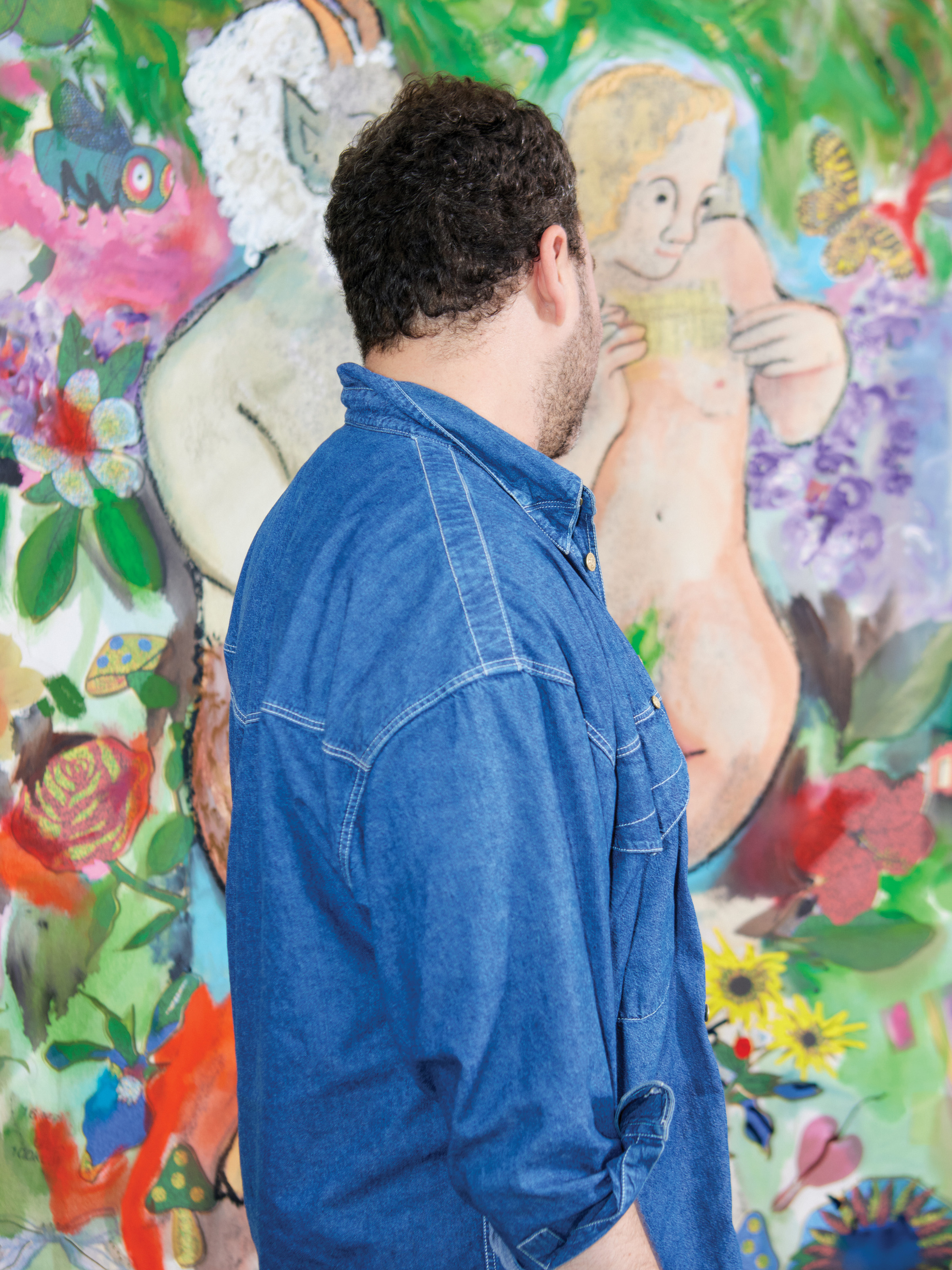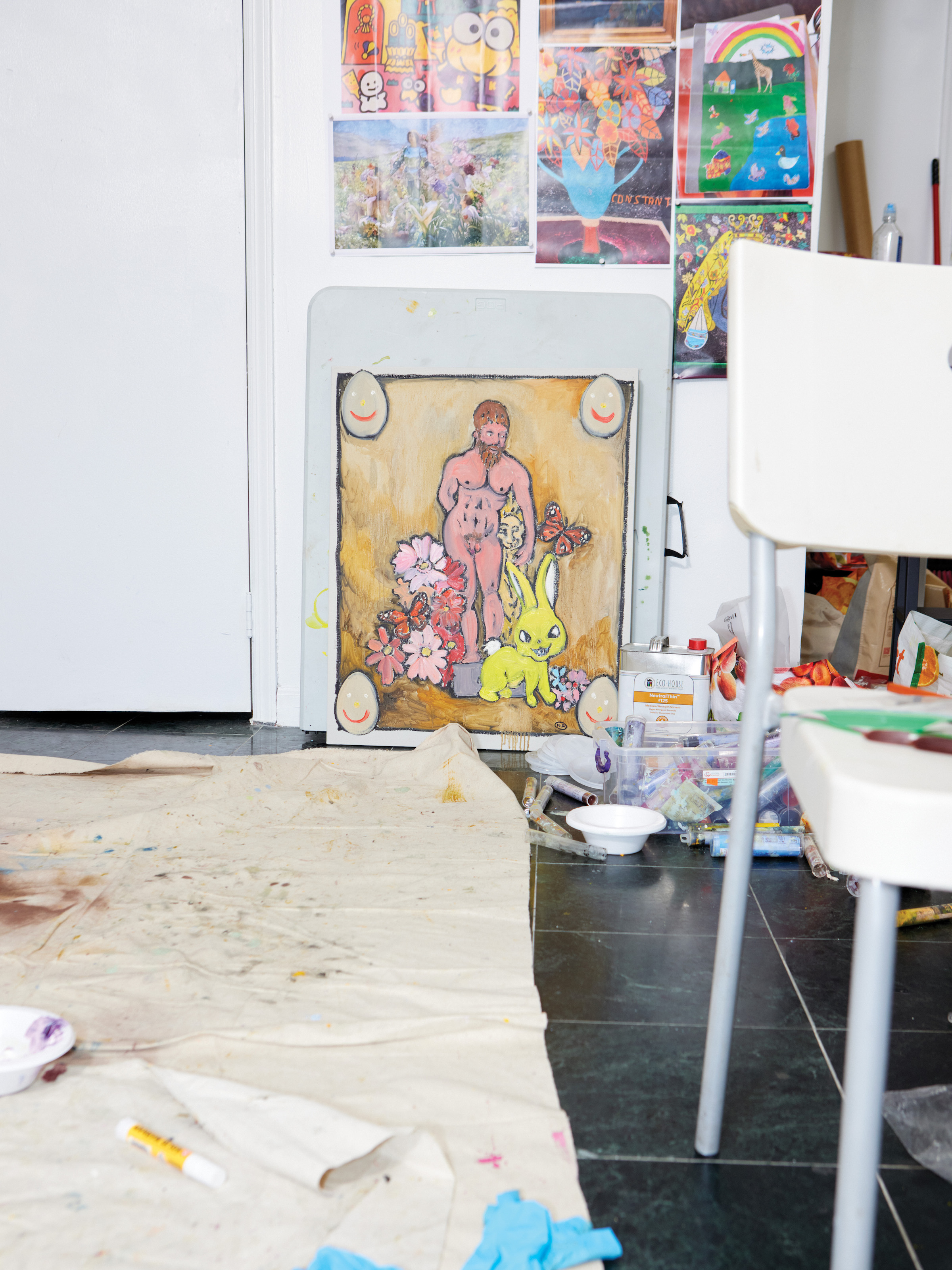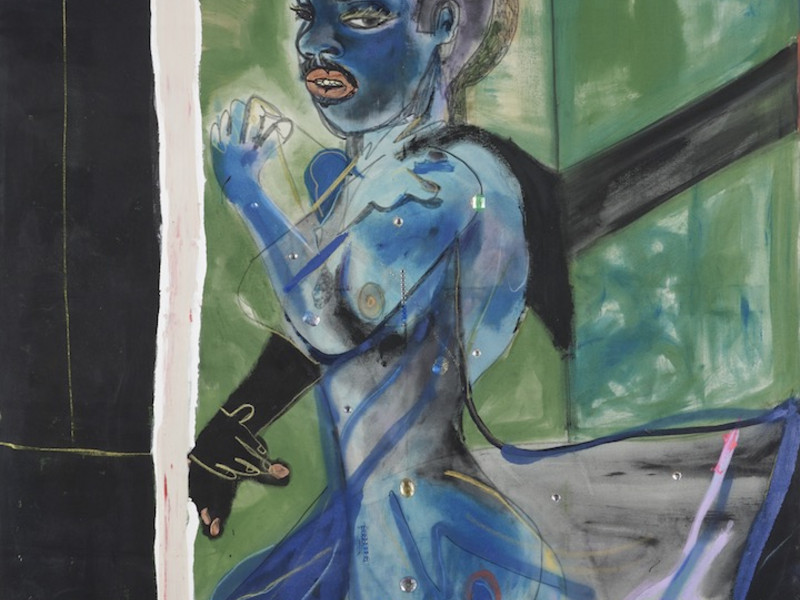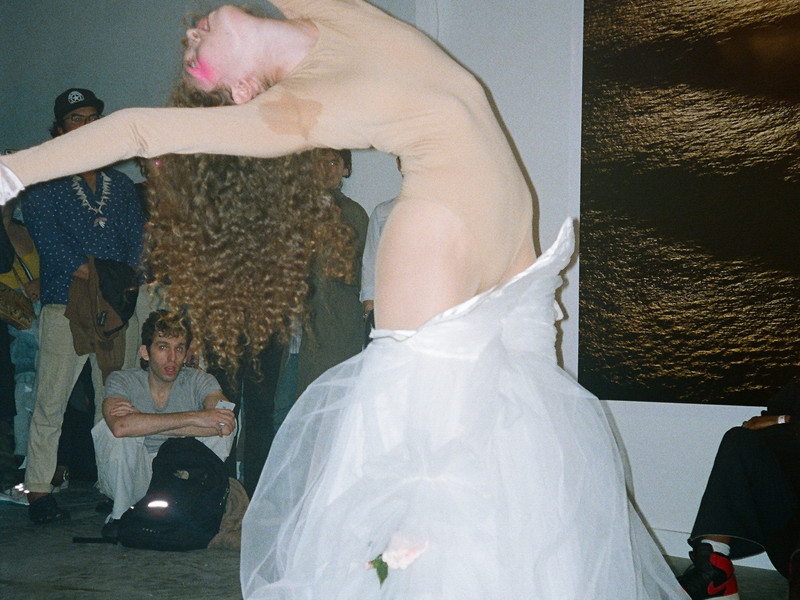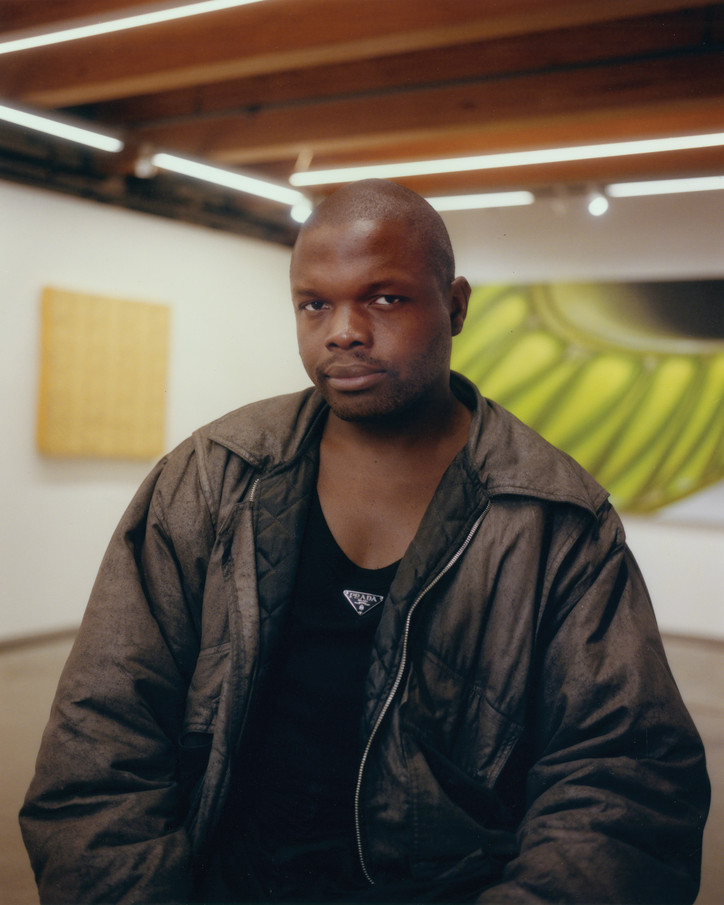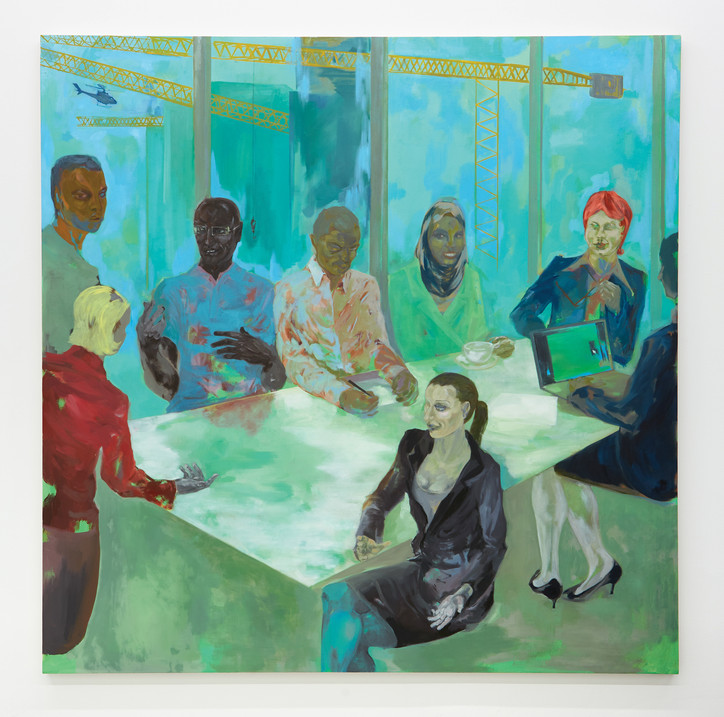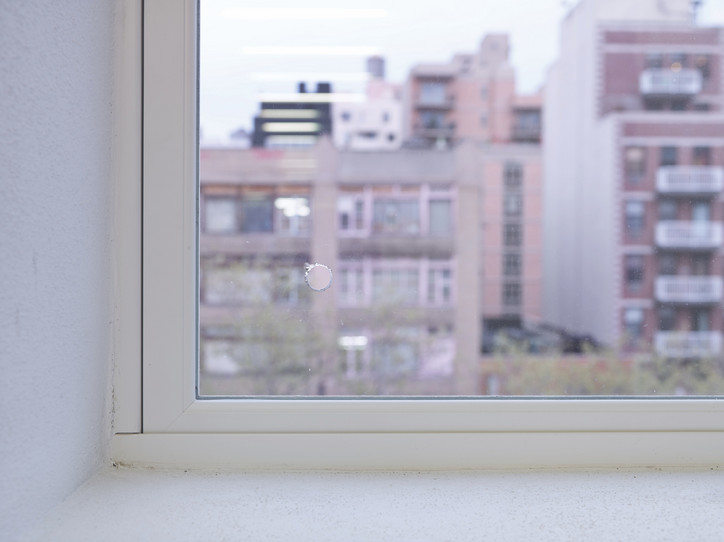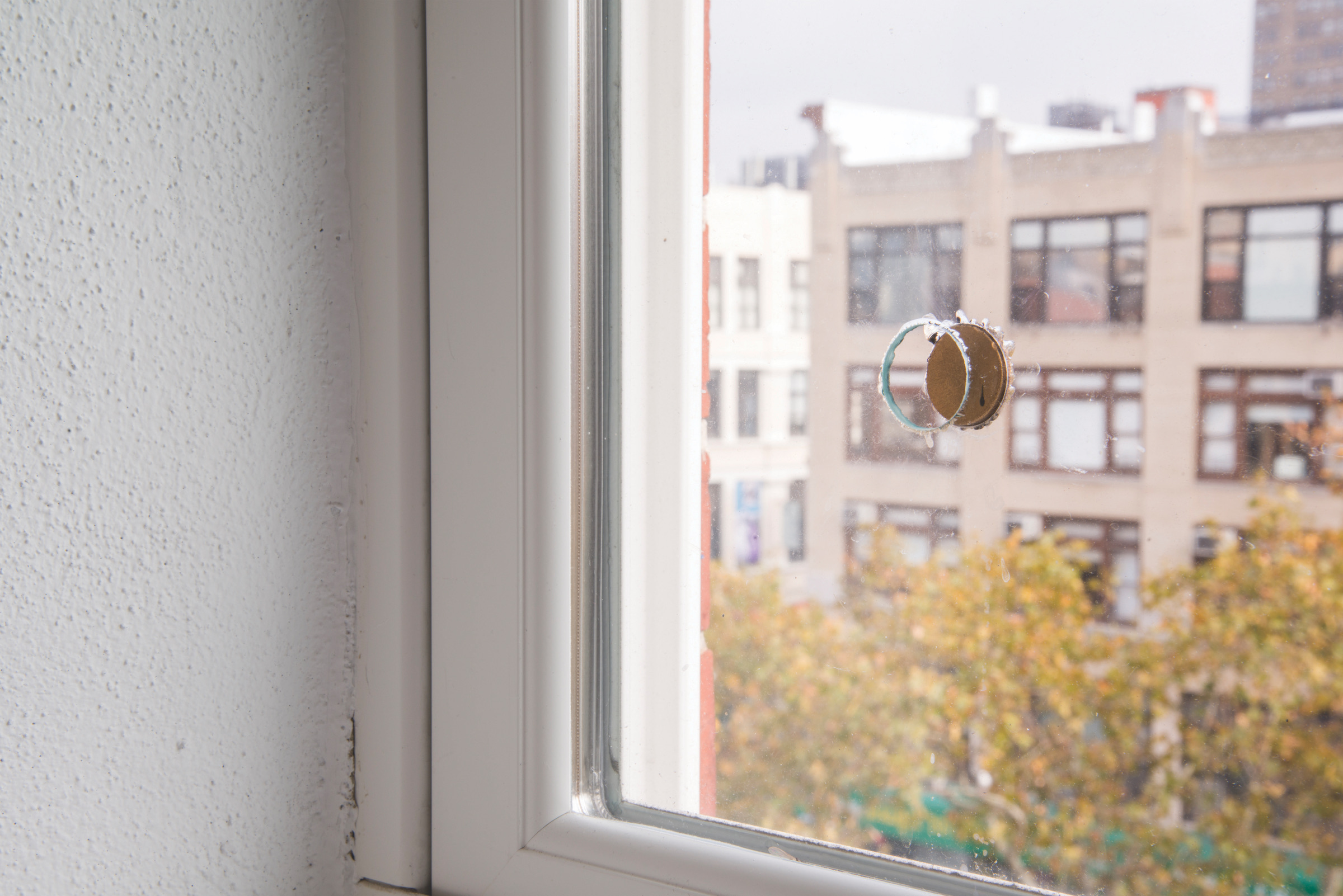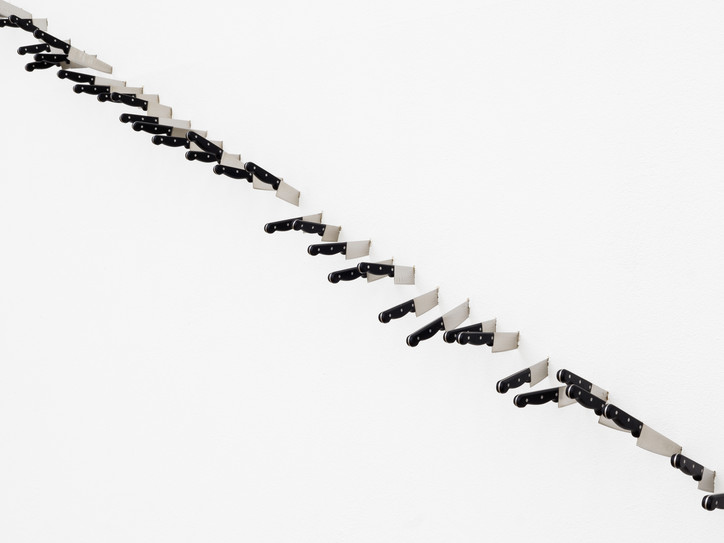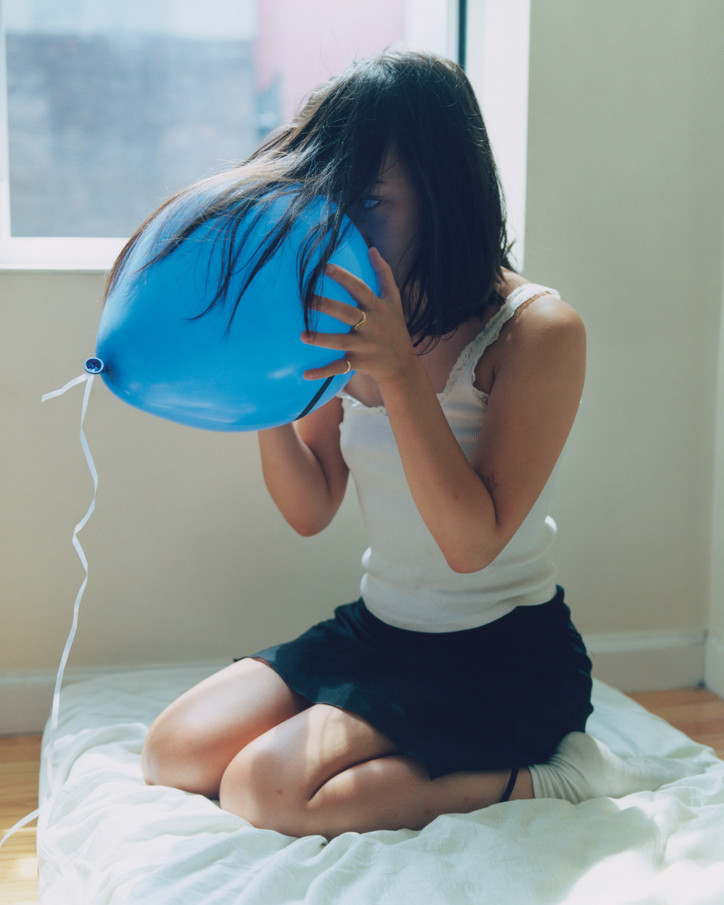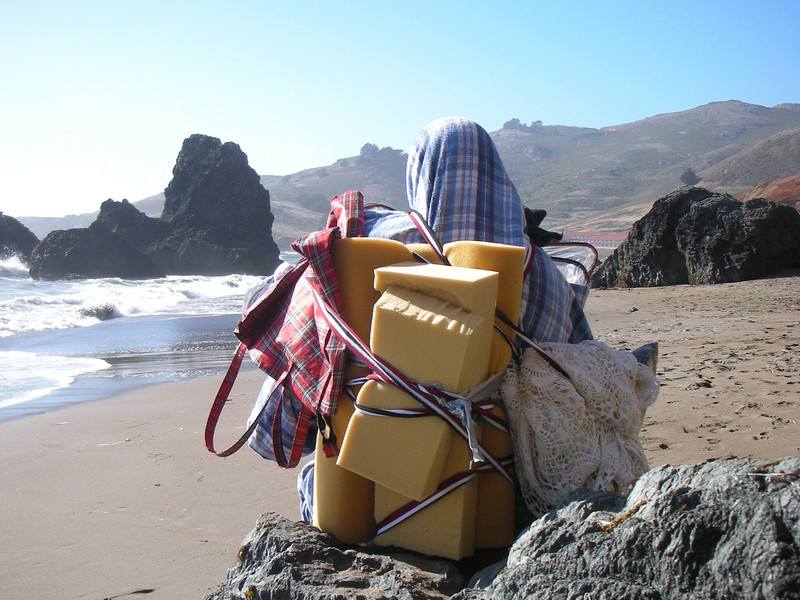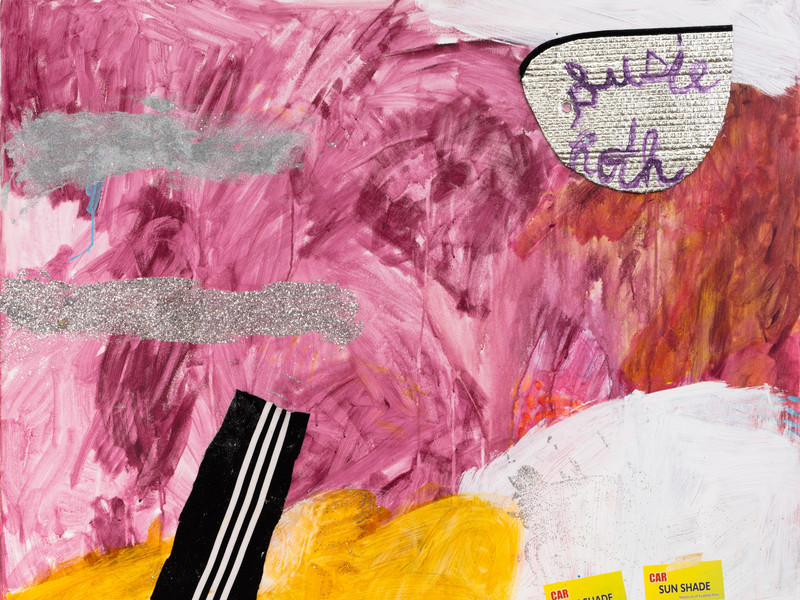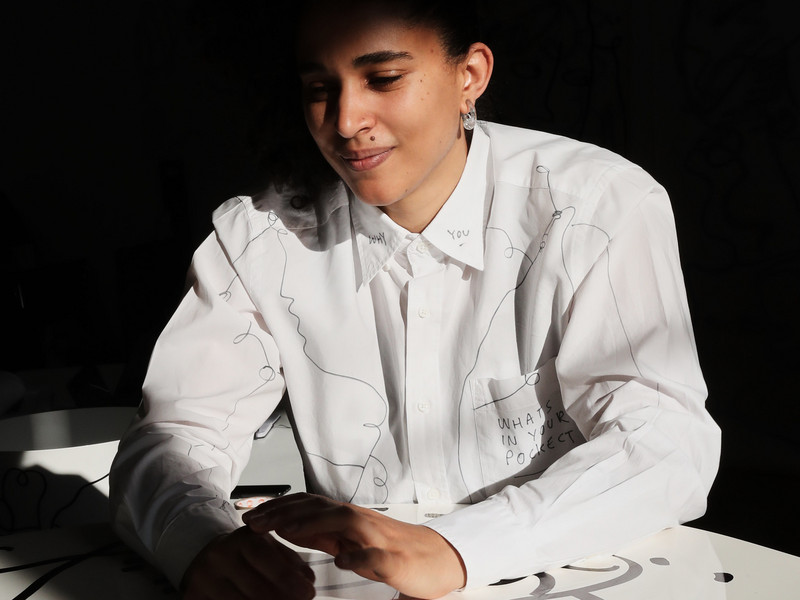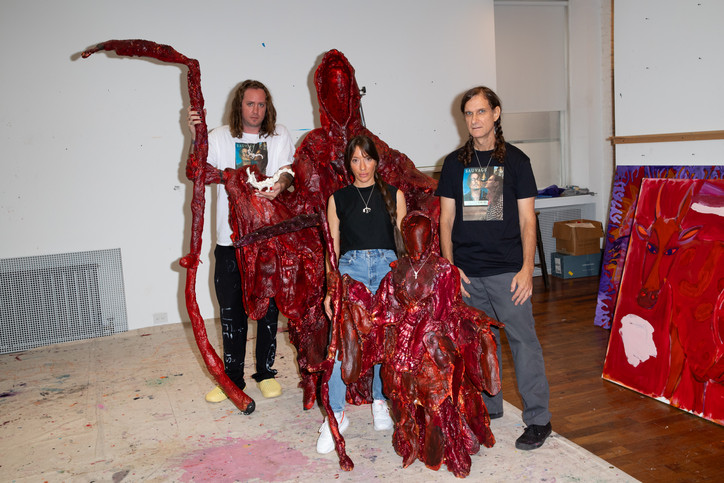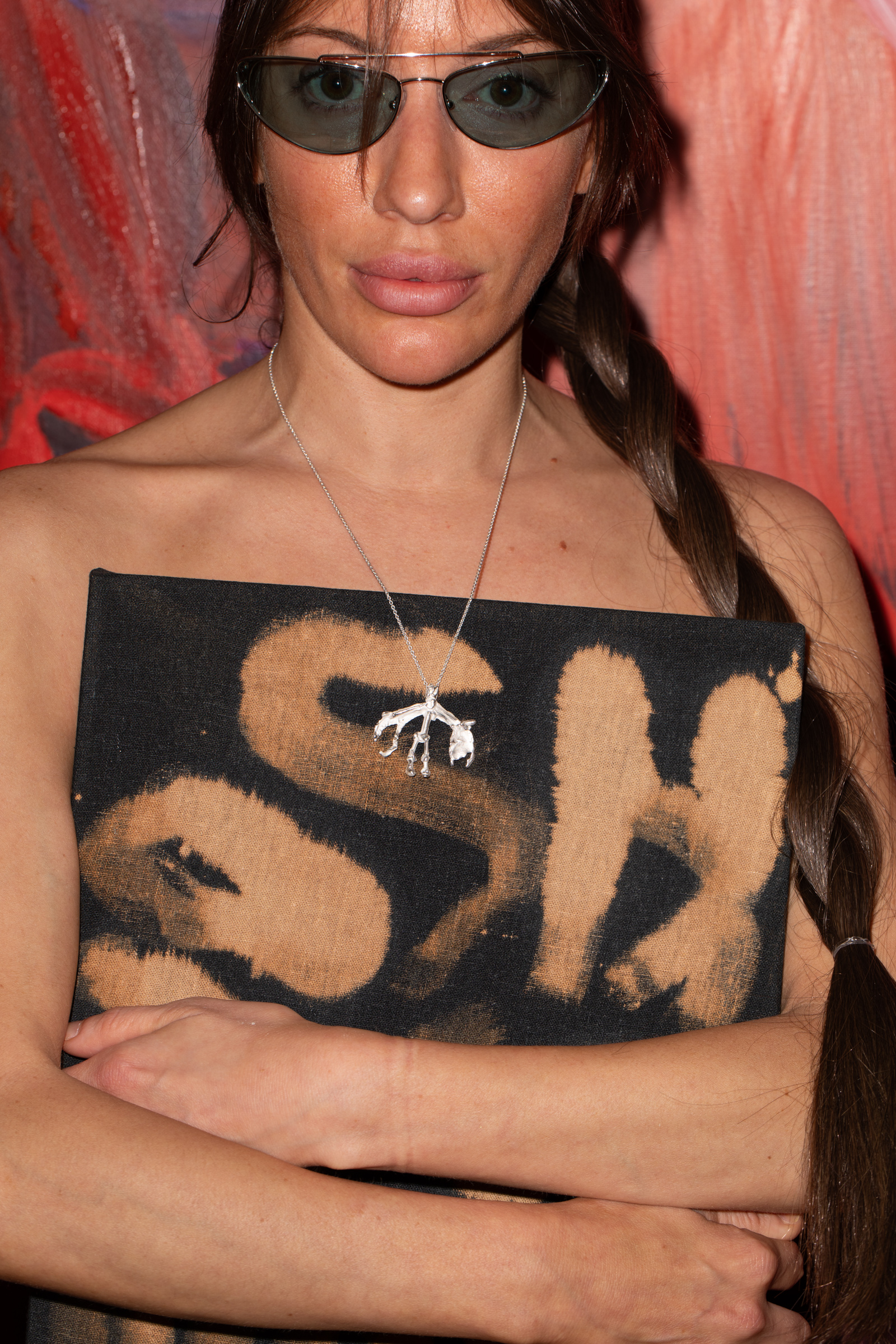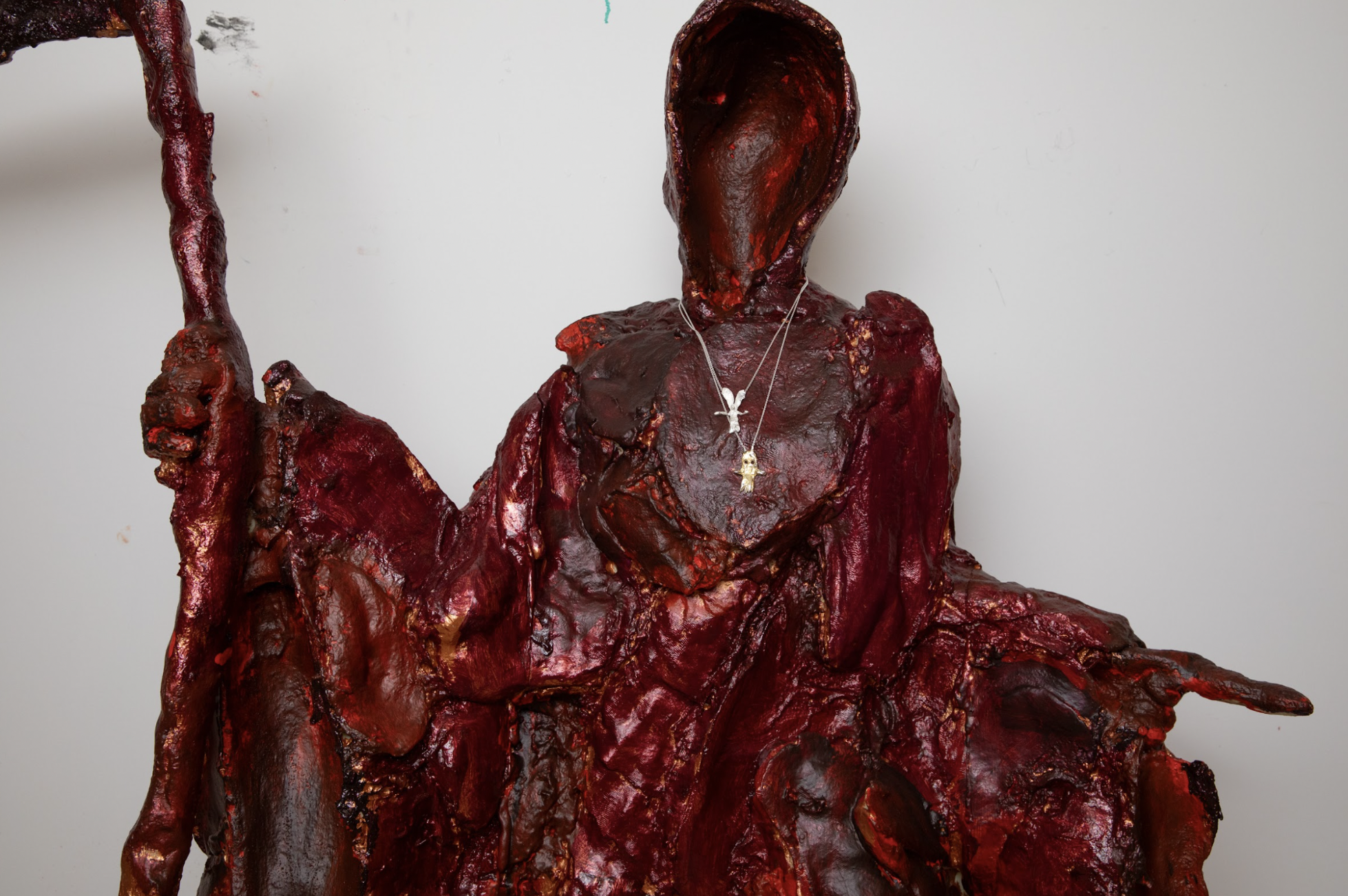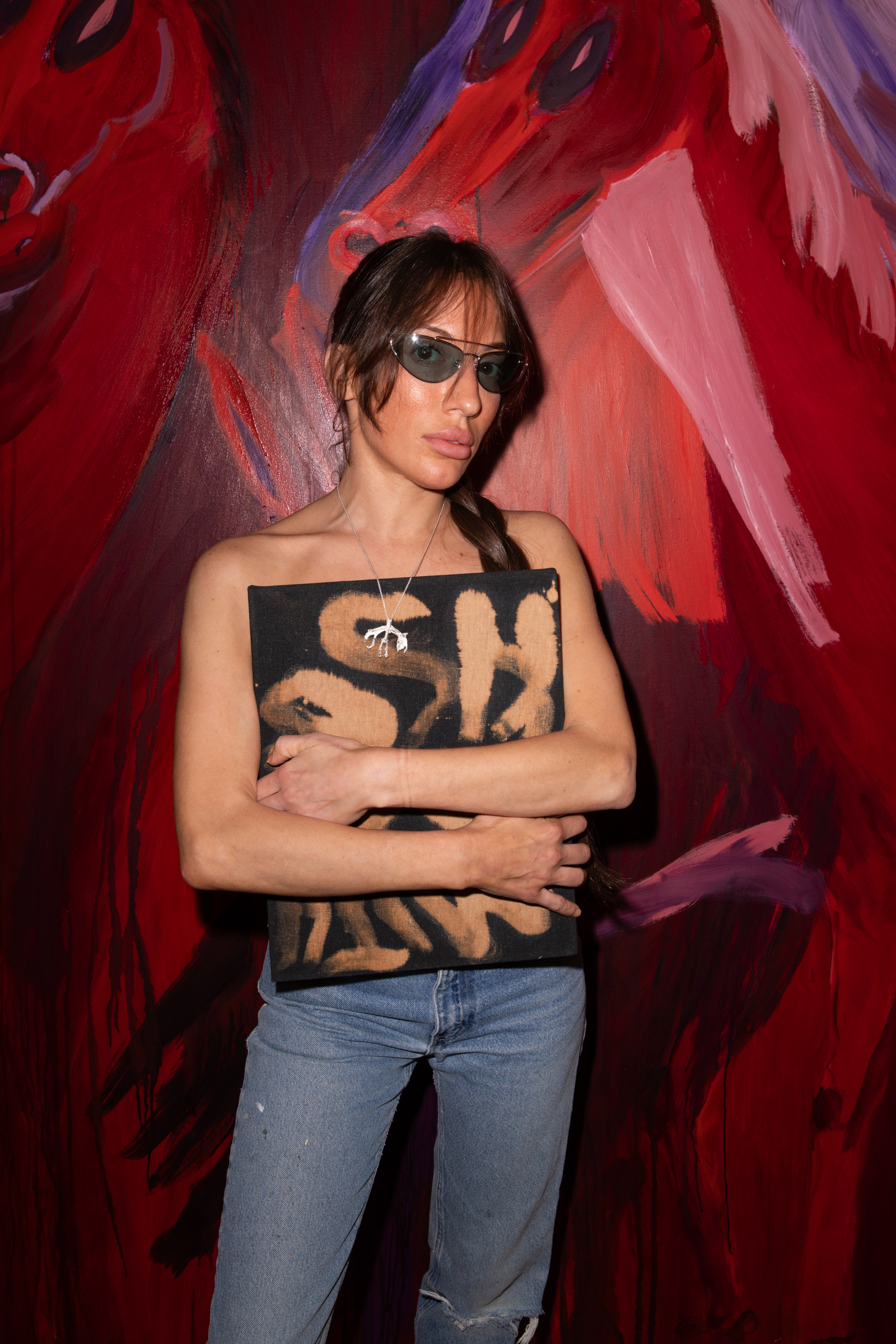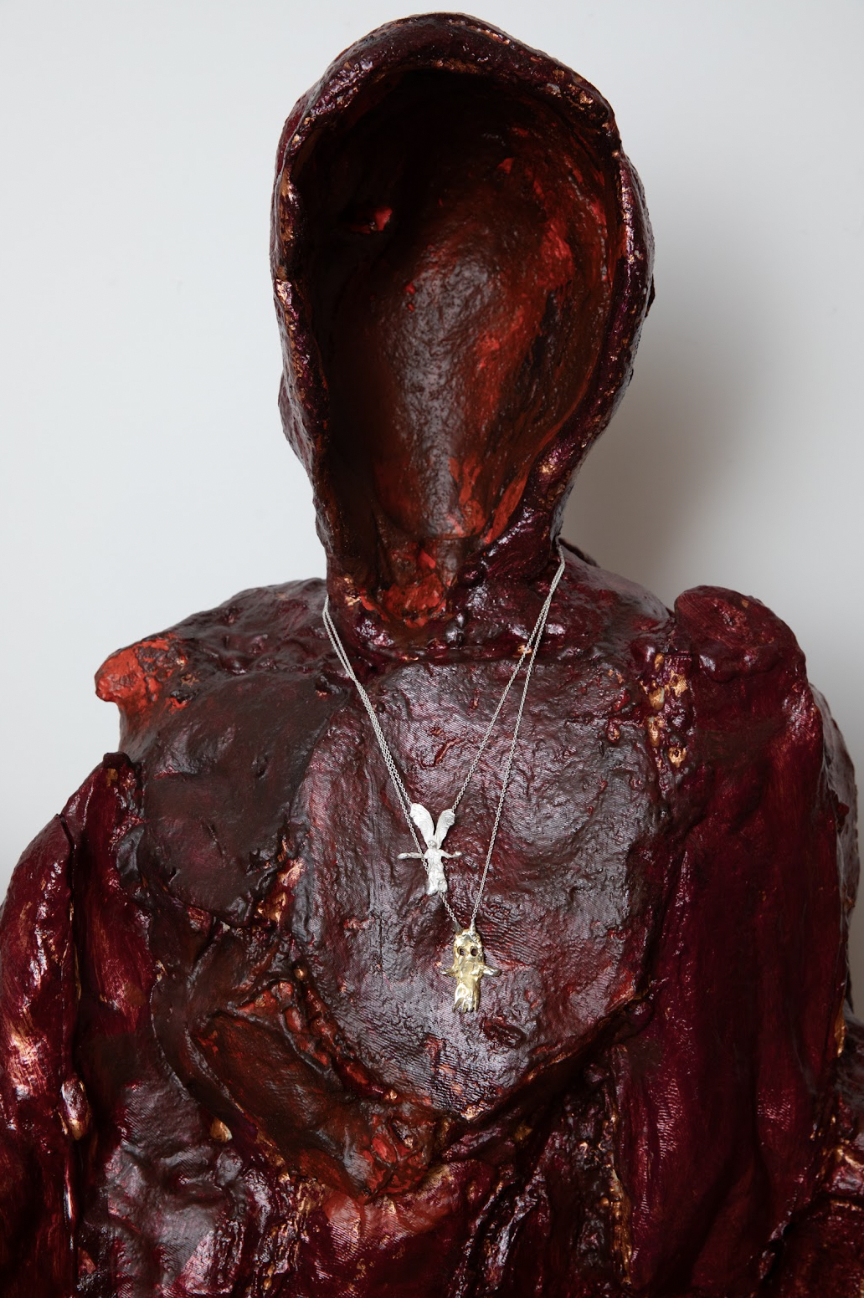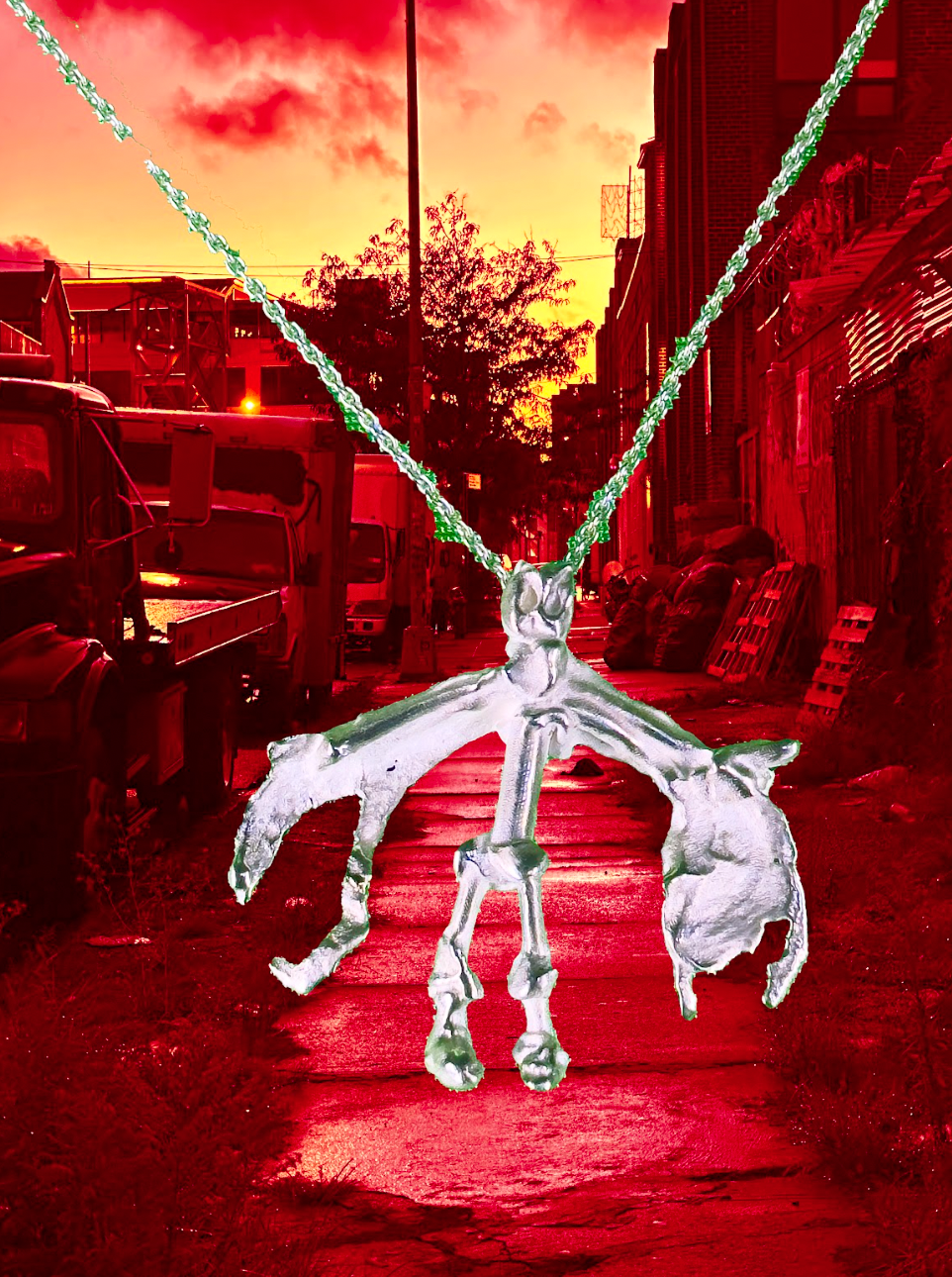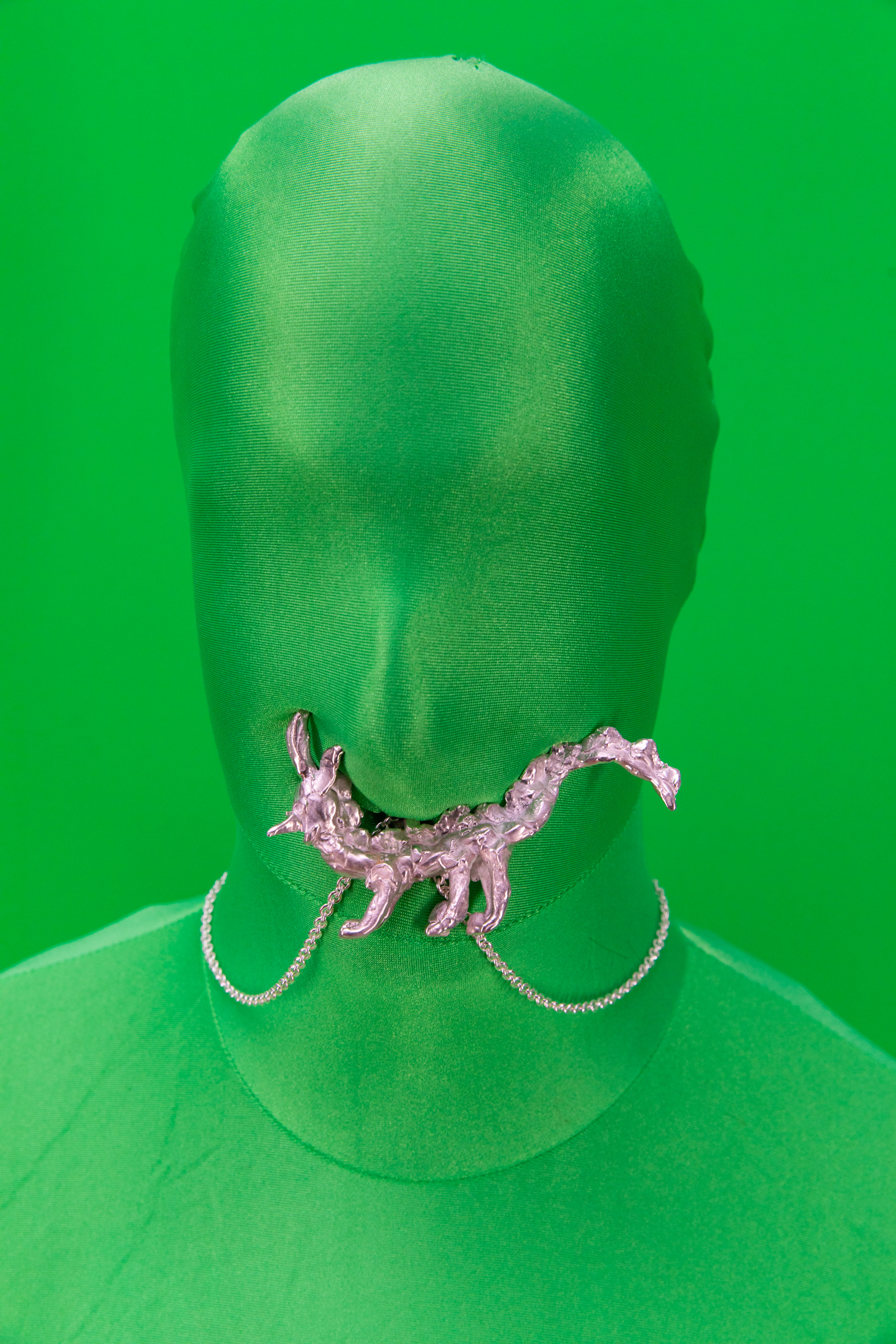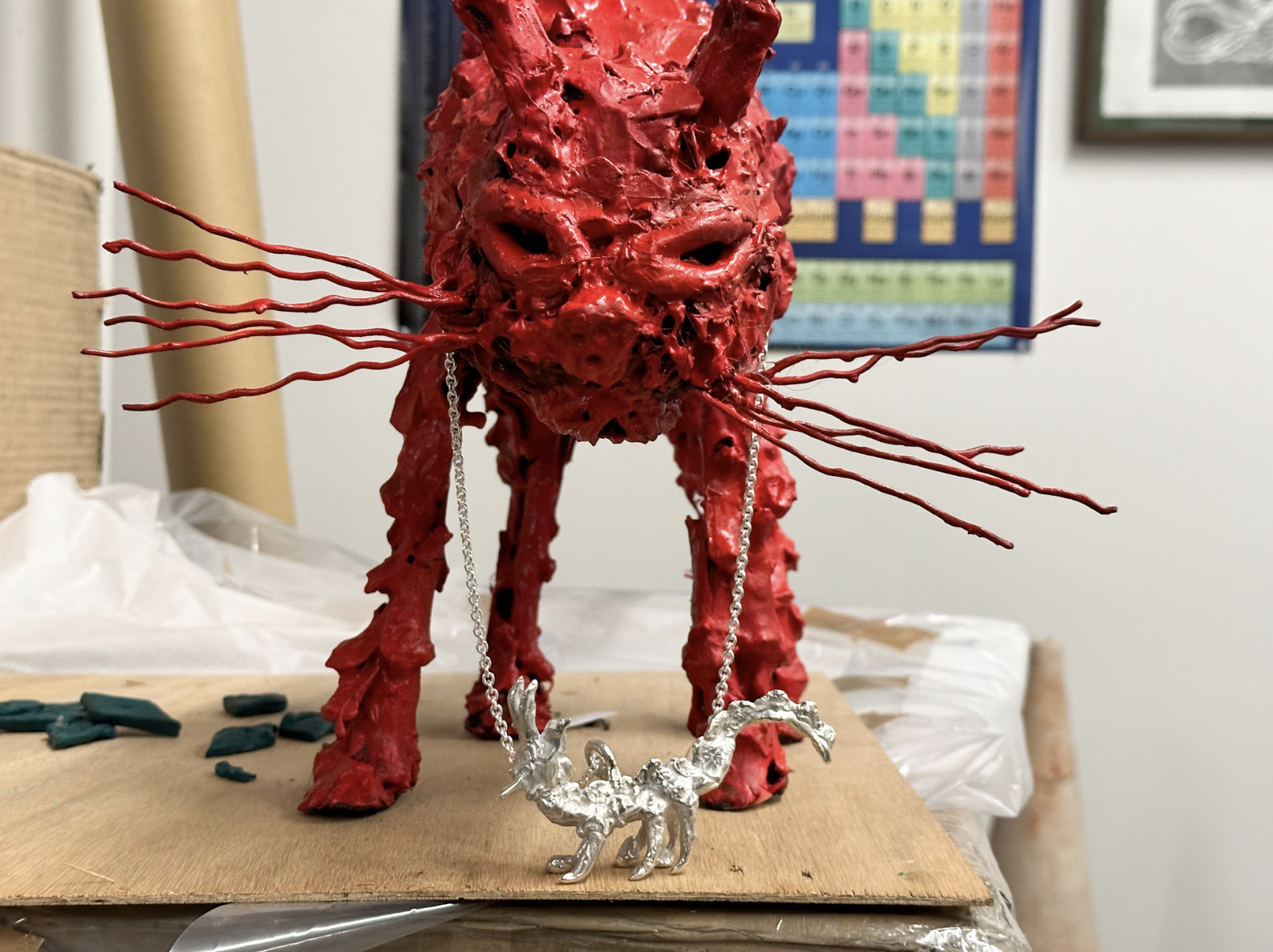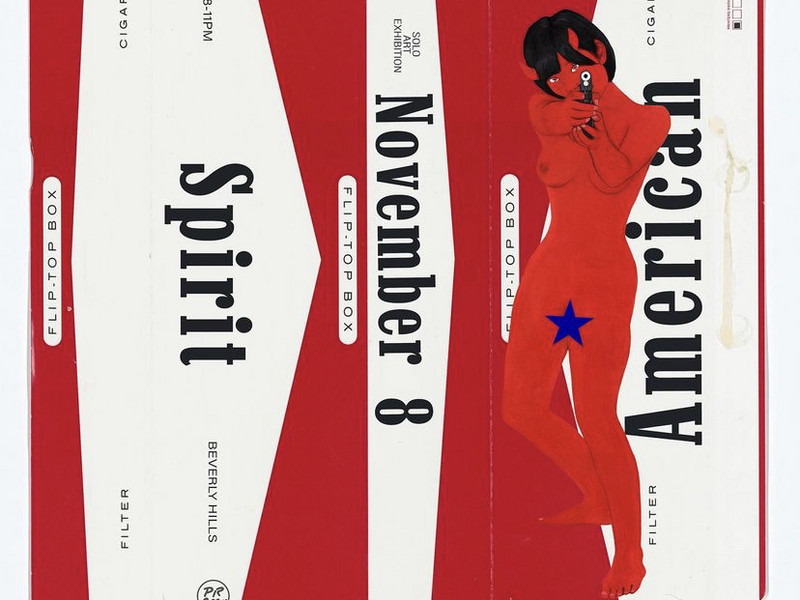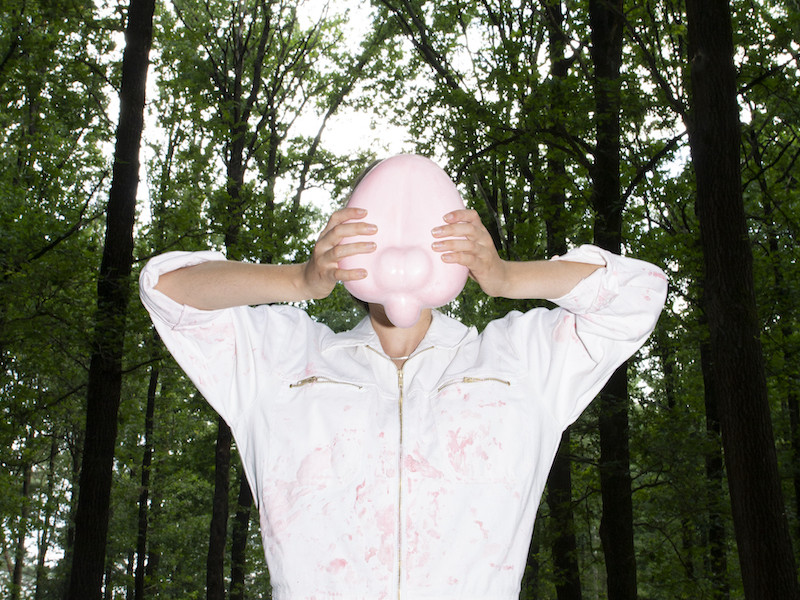ELLIOT REED
K. O. Nnamdie— Hi Elliot, how are you? How’s France right now?
Elliot Reed— It’s going really well. Beautiful day in France. I just finished my master's degree in choreography. I'm staying here for another week to write my thesis. I'm planning on a short mini vacation in Lisbon, then back to New York for a performance at River to River Festival. I had to give myself a little post-graduation vacation.
KN— Of course, you deserve some time off. Honestly, you’ve been busy! It's great to get to talk about An Occasion (2021-2022).
ER— Yeah. An Occasion was the version of a solo show that I had done in Switzerland at Kunsthaus Glarus. It was called Rhythm. An Occasion was the piece with the four motorcycles with MP3 audio, spotlights, and speakers inside of them. I wanted to make an animated piece, a sense of anticipation, expectation, and this blend between dread and ultimate potential, which is a space that I really like to find myself in. Not that I like being full of dread, but more the sensation of being on the cusp of doing something.
Something that a lot of people wouldn't know if they didn't see the work in person is that the motorcycles are actually breathing, and each one is playing a recorded soundtrack of my inhales mixed with digital silence.
KN— What are you working on lately?
ER— Right now, I just finished a pro-process based performance for five dancers called Pigs Milk #2 for Montpellier. This piece is part of new research I'm doing, experimenting with written scores. I spent weeks working with the dancers through a series of written movement prompts. We went on stage in the first 10 minutes of the piece and arranged the potential choreography using a set of handwritten cards that I made before the performance.
So there is a set number of options that doesn't change. However, each performer only gets six options that we write on posted notes and arrange at the front of the stage. Over the course of forty minutes, each performer works through their own row of dance prompts. They take a break, come back, and start with the next performers list.
This continues in order and it's interspersed with light cues, which are spoken numbers that we actually yell out from stage to the tech booth in the back. All of the sound cues are letters that we write on sheets of paper. And any time you finish a piece of dance choreography and have a sound cue, you would write the queue down, walk it up to the back of the booth and physically hand it to the sound person in the back of the room.
It was really a fun experience for me and a great challenge to think about ways of showcasing the bones or the backside of the process, and working in a way that is deceptively simple, but creates interesting and complicated results because of the element of chance.
And then for River to River Festival, I'm going to be doing a series of one-hour solo performances for one audience member at a time called Lotto Royale, to explore the ideas of privacy, secrecy, gossip, and hearsay. I won't share too many details about what I'll be doing with each audience member, but I'm really excited. Having a one-on-one encounter is a way for me to think critically about what it means to see, to share, and to be seen by a viewer and to collapse some of the distance that often comes with live traditional performance versus audience.
KN— I've had the privilege to experience your work in person many times. What do you imagine your work is coming in contact with?
ER— My work is circling around the nature of viewership and experience. I think both in my performance work and in my sculpture, I'm very interested in questions around visibility, order, logic, sort of tied together with a bit of sentimentality and storytelling as well.
What I like about working in sculpture and installation is the ability to express an idea or a story with an audience member in an environment where every detail is something I'm able to control, from the color, the sound, the light, to the size of objects. Whereas with performance, working in a linear way in time-based media, there's something more about the idea of surprise, repetition, and narrative development, that comes from seeing certain themes return from the beginning of the piece and the end of the piece.
I'm explaining both my visual work and performance work in such broad terms just because the content or the research varies from project to project. But I think these themes of viewership, potentiality, and liveness are what I'm trying to expose.
KN— I love scores, and I've been thinking about your work quite a bit as well as Ghislaine Leung, Lizzie Bougatsos and Yoko Ono. In the first performance that you did when you came back to New York from Paris, there were a lot of pop elements. Could you share what that performance was about?
ER— Oh, the piece at Kai Matsumiya — that piece was a monologue. If I were to assign a character with it, I would say that it's linked to switching channels or radio scanning, but performed in the style of a choreography. That's the language that I've been using to describe my recent performance work.
The performance that I did, there were samples of text, things that I've read, things that I've heard online, conversations that I've had with people — mixed with movement that I created based on feelings, memories, misunderstandings — and quickly cycling between these different sections of text and these different sections of movement. So that's the technical side of it.
But it manifested as samples of music video choreography, both real and imagined. Things like I've overheard waiting in line at the store, arguments I've had with myself, and other people, directly addressed to the audience. There is at one point I think I asked if anybody has ever suffered egregious bodily harm. I think that's when this guy who broke a leg in this skateboarding accident came up.
There is also this continuation of this idea of sampling, repeating, remixing, metabolizing, that sort of came with the material that I brought in that day, and then also a bit that got mixed with who or what I found in the room that evening.
KN— This repetition or stutter is also really present in the work An Occasion (2022) with 69 knives. If people hadn't seen the work in person, they wouldn't notice that there is a stand alone knife. I believe that's the 69th knife, which was installed by you with your own hands at your height. Is that correct?
ER— Yeah. I took a gesture and in a Muybridge-esque way, like referencing early film, imagined the idea of le stab and stretching it, repeating it, animating it and turning that into an image which links this idea, performance as object, object as performance.
And then the last knife that you're referencing, that's the head height, is about the artist's hand — my presence, my subjectivity, but also as a way to humanize the gesture a little bit.
KN— The way that you had accessed this gesture of stabbing was at once humorous, of course, but extremely elegant in the way that you were able to stretch it out. And there were moments where it felt like a musical arrangement. Do you think about music a lot in your work?
ER— I do. I grew up playing piano and I composed for a great portion of my life. After that, I had a solo electronic music project and I've collaborated with a lot of bands including this experimental rock band called Xiu Xiu. I also had a commission in 2019 with Jack Quartet, which is an incredible experimental string quartet, a classical music group based in New York City. I've worked with them three times.
I did a project called Succulent Rust in Central Park in the Ramble, which is the cruising area in the park, where I composed a score with the performers. We made music together in the studio, and then once they went to the site, instead of playing the notes off of sheet music, I actually attached cues to things they'd see in the landscape.

